25 North-facing garden ideas that will transform how you see your outdoor space
Discover the beauty in north-facing garden ideas which will make you glad you have one
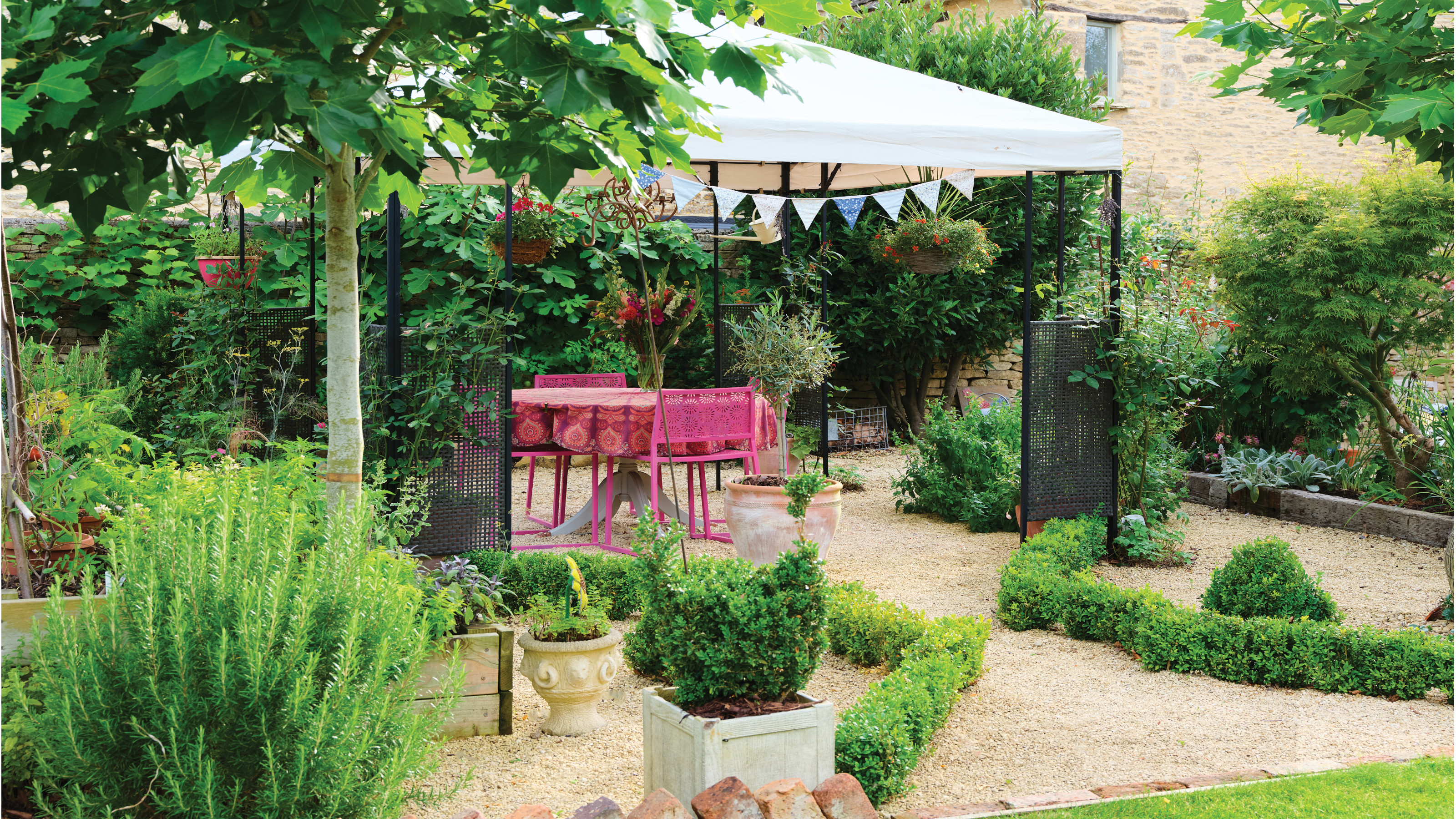

If I were to ask you to describe your ideal garden, I'm going to put good money on the fact you're not going to say 'north-facing garden'. I'm even going to go as far as to assume that when you set out on a hunt for north-facing garden ideas you saw it as a problem to solve.
First of all I do understand your predicament, south-facing garden ideas get all the glory as sun-filled traps. But the thing is that a north-facing garden idea doesn't automatically mean you're stuck with only researching shaded garden ideas. The reality of a north-facing garden is that some of them do actually get sun (shocker!)
Yes, they do get less light than a south-facing garden because the house blocks out some of the light. But, if you're home isn't that tall you can get sun all day during the summer even in a north-facing garden.
On that perception-changing bombshell, before you start planning any north-facing garden ideas we'd recommend you map the light in your garden. Mapping how many hours of light and at what times of day is the only way to assess the best way to plan a garden to capitalise on sun spots, and even get the most out of mysterious pockets of shade.
North-facing garden ideas
‘It can be easy to automatically position garden furniture close to the house for convenience, but if you want to make the most of your limited sun, consider placing any furniture further away from the shadow the house will create,' points out Joel Garthwaite, chief marketing officer at Harbour Lifestyle.
There are four types of shade that your garden might have, which you will need to take into consideration before planting anything.
Open shade is when you have bright light but no direct sunlight. Filtered shade is when moving patterns of light come through the branches of a tree. Medium shade is when open shade is combined with light blocking from leaves and branches. Deep shade is the type of shade found beneath trees and gets very little sun.
Get the Ideal Home Newsletter
Sign up to our newsletter for style and decor inspiration, house makeovers, project advice and more.
1. Opt for a highly textured planting scheme
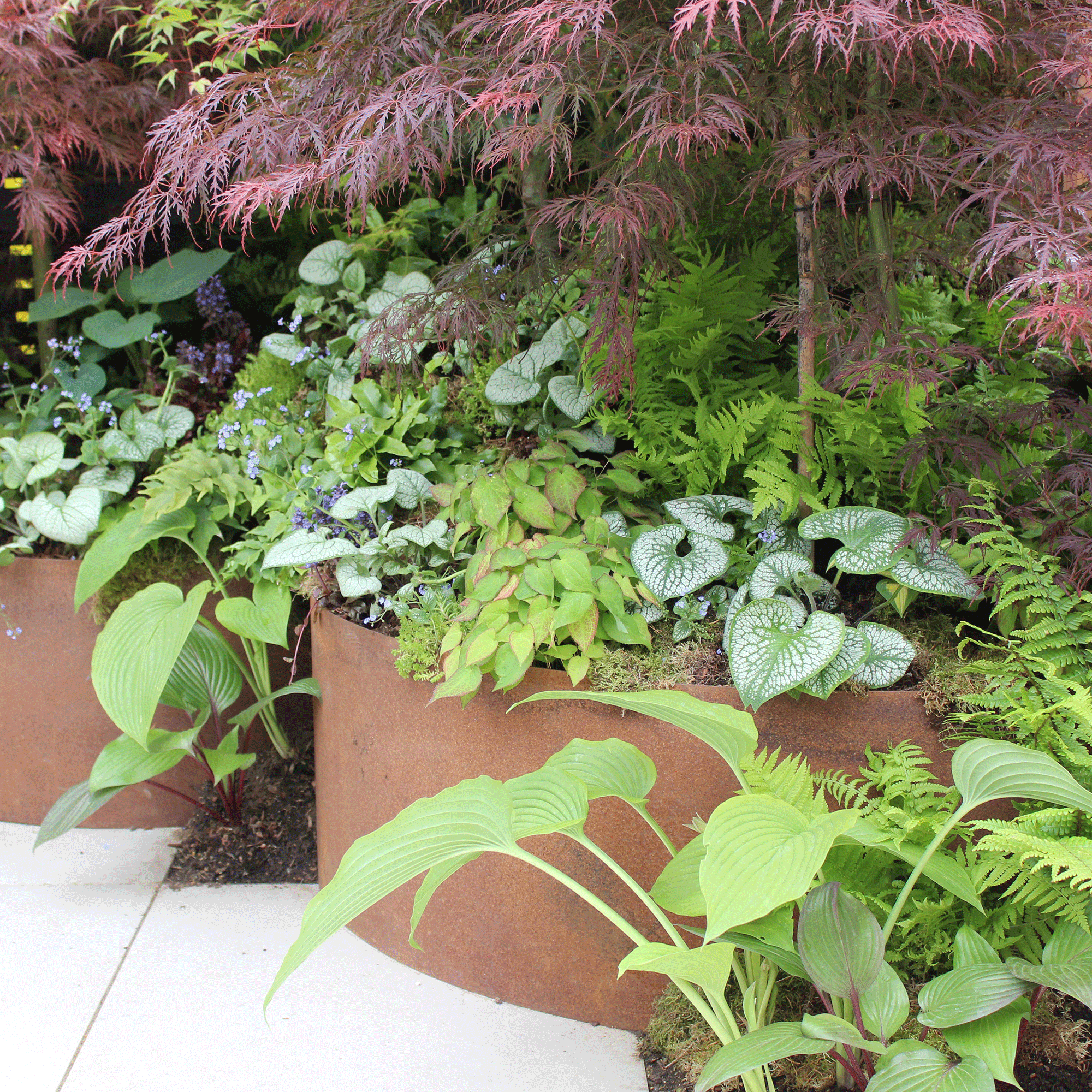
To avoid your north-facing garden looking dark and foreboding, award-winning garden designer Matthew Childs suggests that you choose plants with lots of textural foliage.
‘North-facing gardens can be beautifully relaxing tranquil spaces if you embrace greens in your planting with lots of textural foliage and different shaped leaves,’ he says. ‘For these spaces, hosta, ferns and epimediums are my go-to plants, with glossy leaf plants like Fatsia japonica reflecting light into the space.’
Matthew adds that ‘adding in a sprinkle of white or lime green in the flowers or foliage of your planting will also help to illuminate the space’.
2. Invest in a patio heater
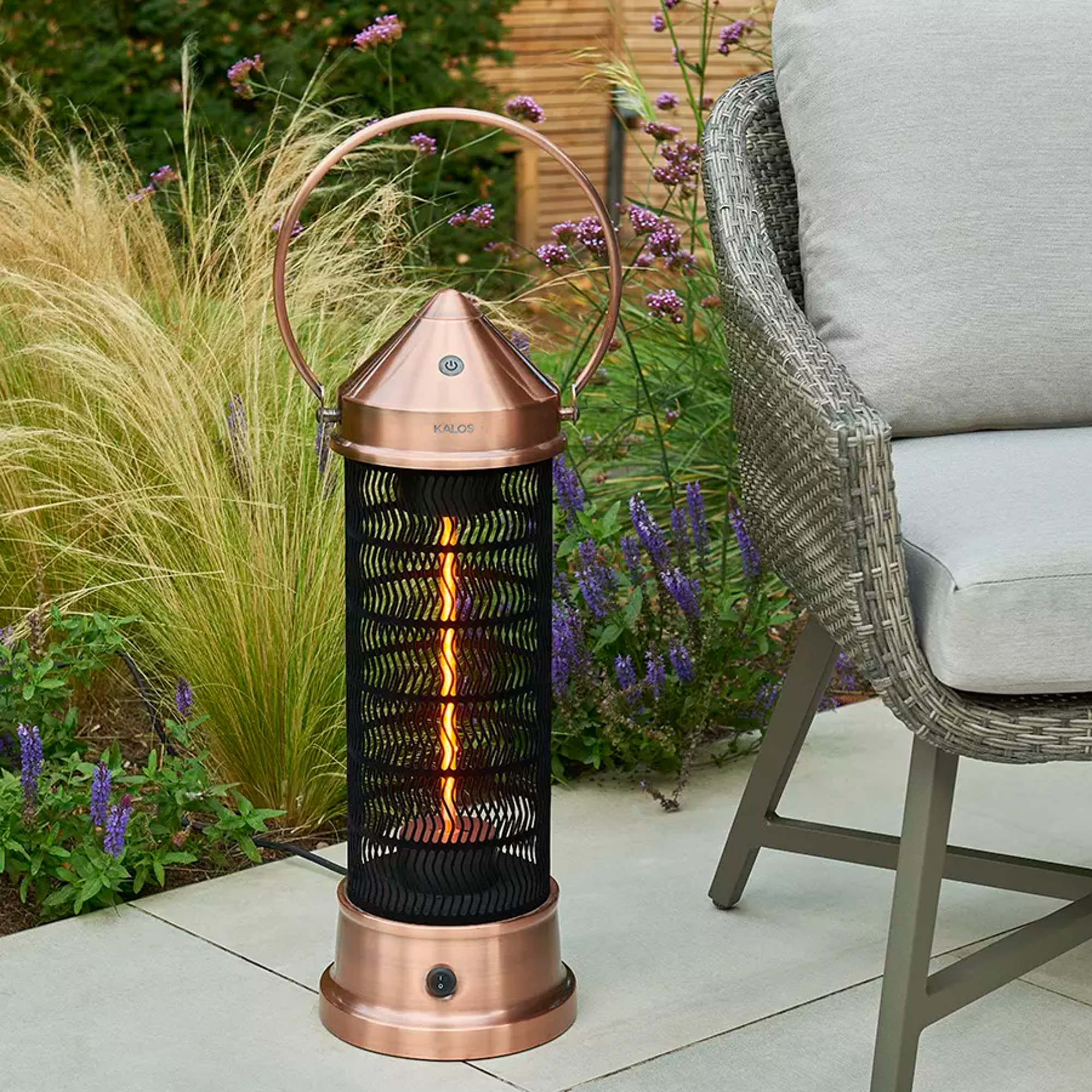
North-facing gardens benefit from the evening sun in the summer months (when it’s not raining, of course), so make sure that your garden is set up to make the most of these glorious golden hours. ‘The key is to add some freestanding or wall heaters to ensure that, in the absence of the heat, you are still comfortable,’ says Kunal Trehan, design director at Touched Interiors.
As well as sourcing some of the best patio heaters, Kunal adds that you should also ‘avoid planting tall trees around your outdoor seating area, too, so that you get the maximum sun all the way to sunset’.
3. Build around a fire pit
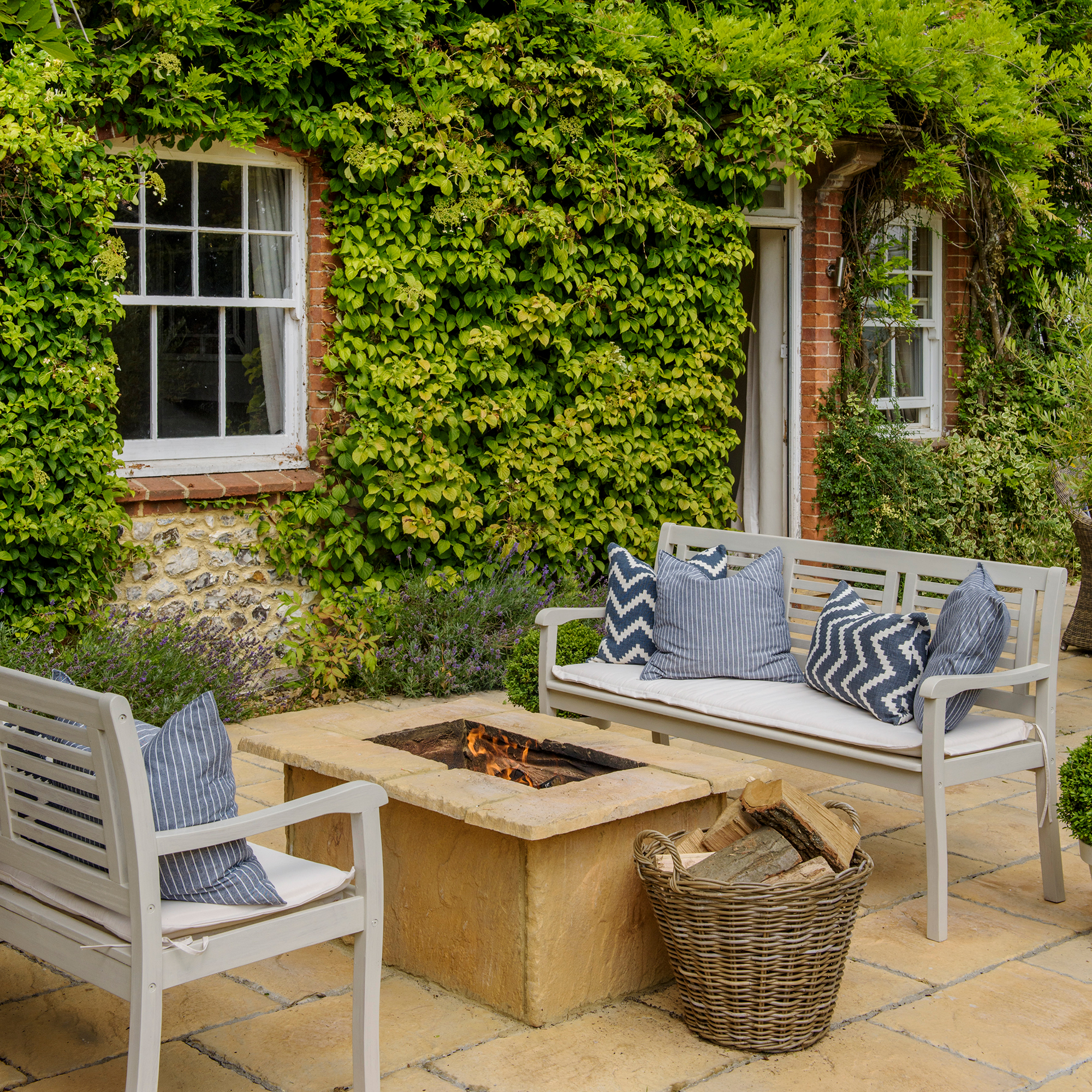
The best firepits can work in any garden, no matter the size or aspect, and they are especially well suited to north-facing gardens. 'There are a number of benefits to having a fire pit, including bringing the comfort and cosiness of an open fire to the garden and adding a focal point to your garden where you can sit, relax and lap up the heat from the flames,' explains Natalie Carton, furniture and home accessories buyer at Fenwick.
Try building your seating around the fire pit, to help you make the most of that aforementioned evening sunshine.
4. Choose shade-loving evergreens
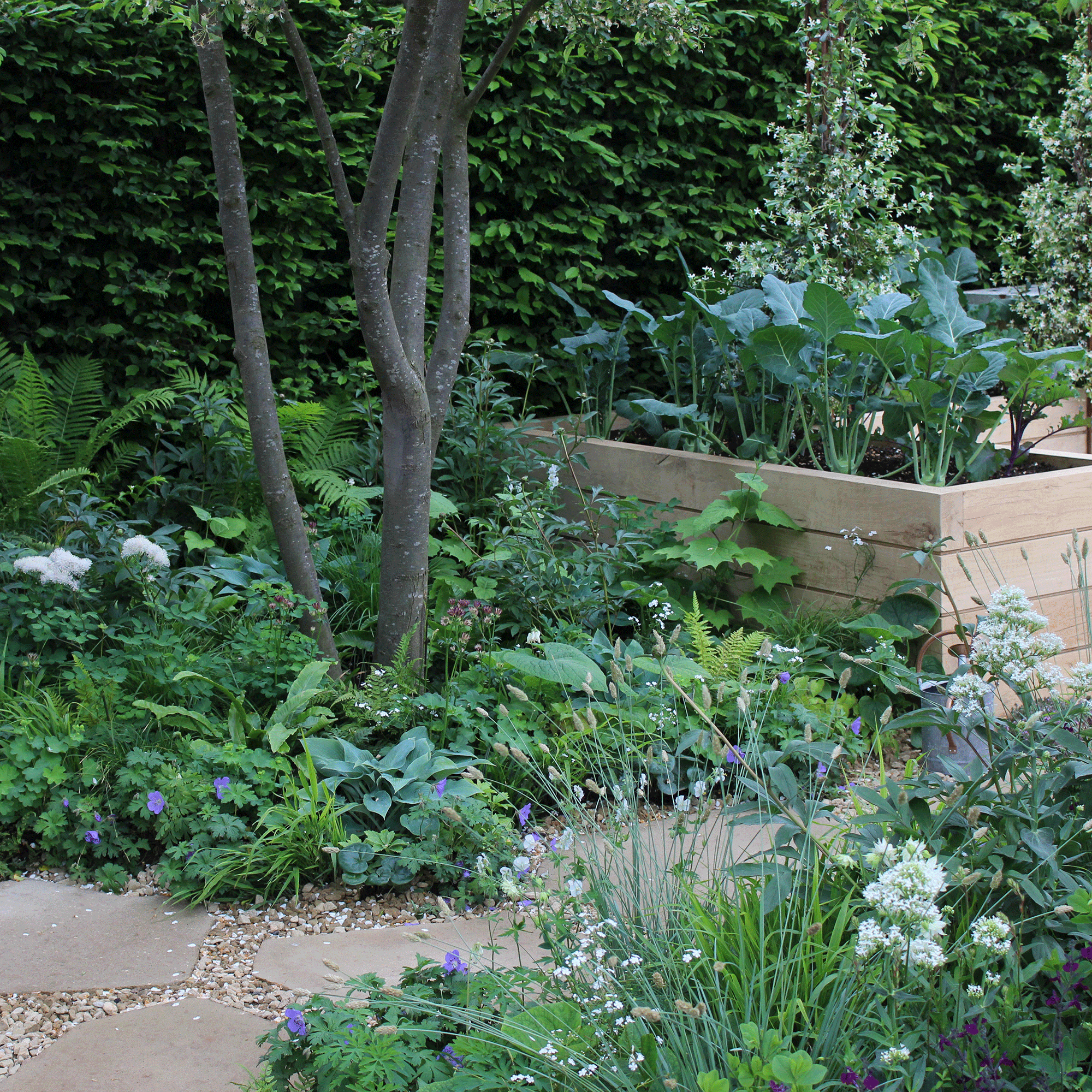
Garden designer Jacquie Felix-Mitchell specialises in oasis-style gardens, and suggests that you look for plants ‘which sing in the shade’.
‘The gorgeous and rather stylish petiolaris is an evergreen climbing hydrangea,’ she says, ‘and you can easily grow it up a wall.’She adds: ‘Clematis armandii, too, is a classy plant with evergreen pointed leaves. First among equals, she'll romp her way up a trellis, pergola or wall, and give you small scented white flowers in late winter, or early spring.’
5. Cut down on the grass and extend your planting
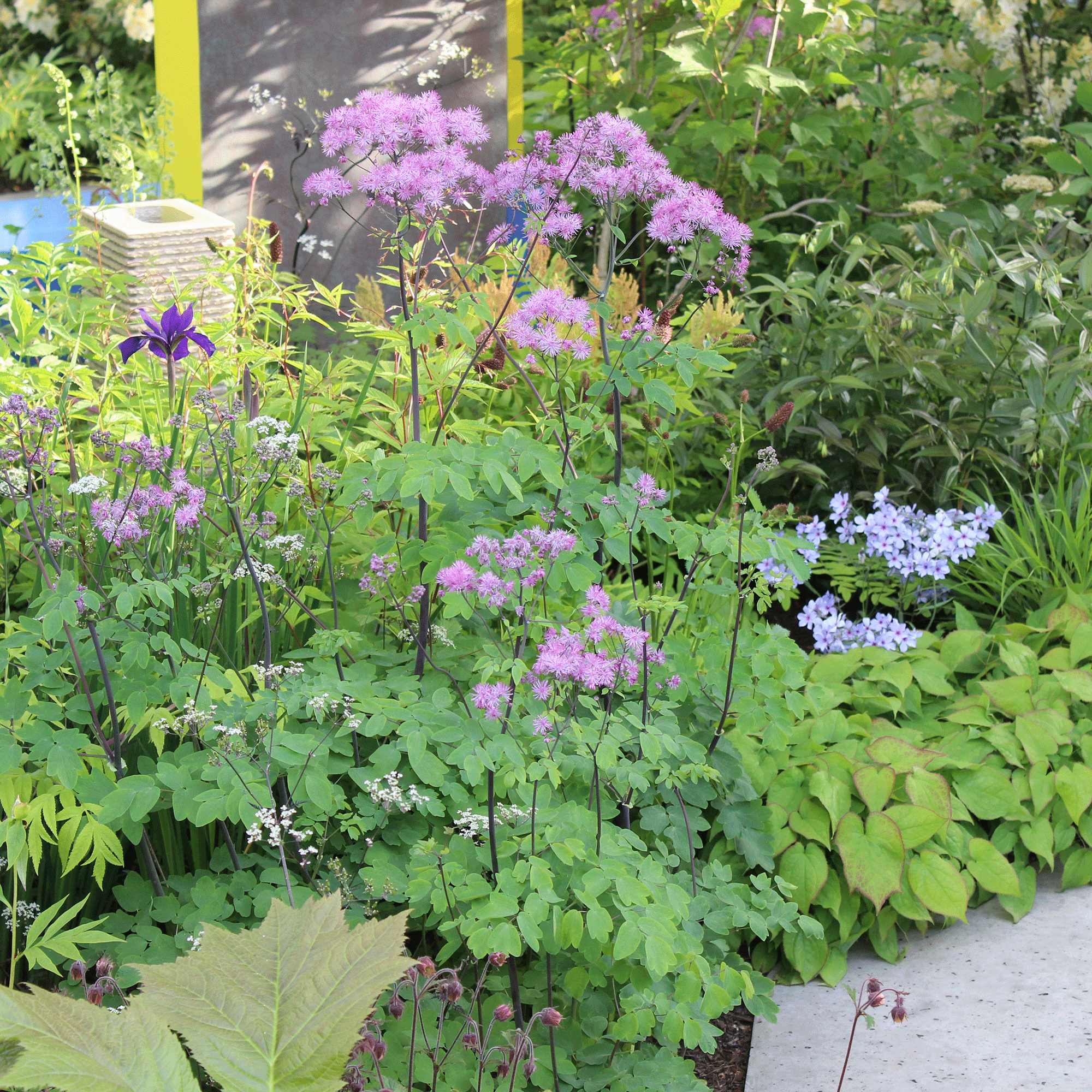
If you have a fairly small garden then having a large amount of it dedicated to a lawn is not your best option. A smaller north-facing garden will get less sunlight which will prevent your grass from growing to its full capacity and make it look sparse. If you do still want a small area of grass opt for a shade-tolerant grass mix which contains a high level of fescue grass which is good at coping with shade, drought and low nutrient levels. For damp shade go for a mix with bent grasses such as agrostis.
‘The majority of the grass planted in gardens needs sun to grow and ensure it's that dazzling shade of green that every garden owner desires. If you still want your garden to be green, think about extending your planting spaces and covering your garden with plants and flowers,’ says Rian Habergham, garden expert at Leisure Bench.
6. Embrace the rich variety of ferns
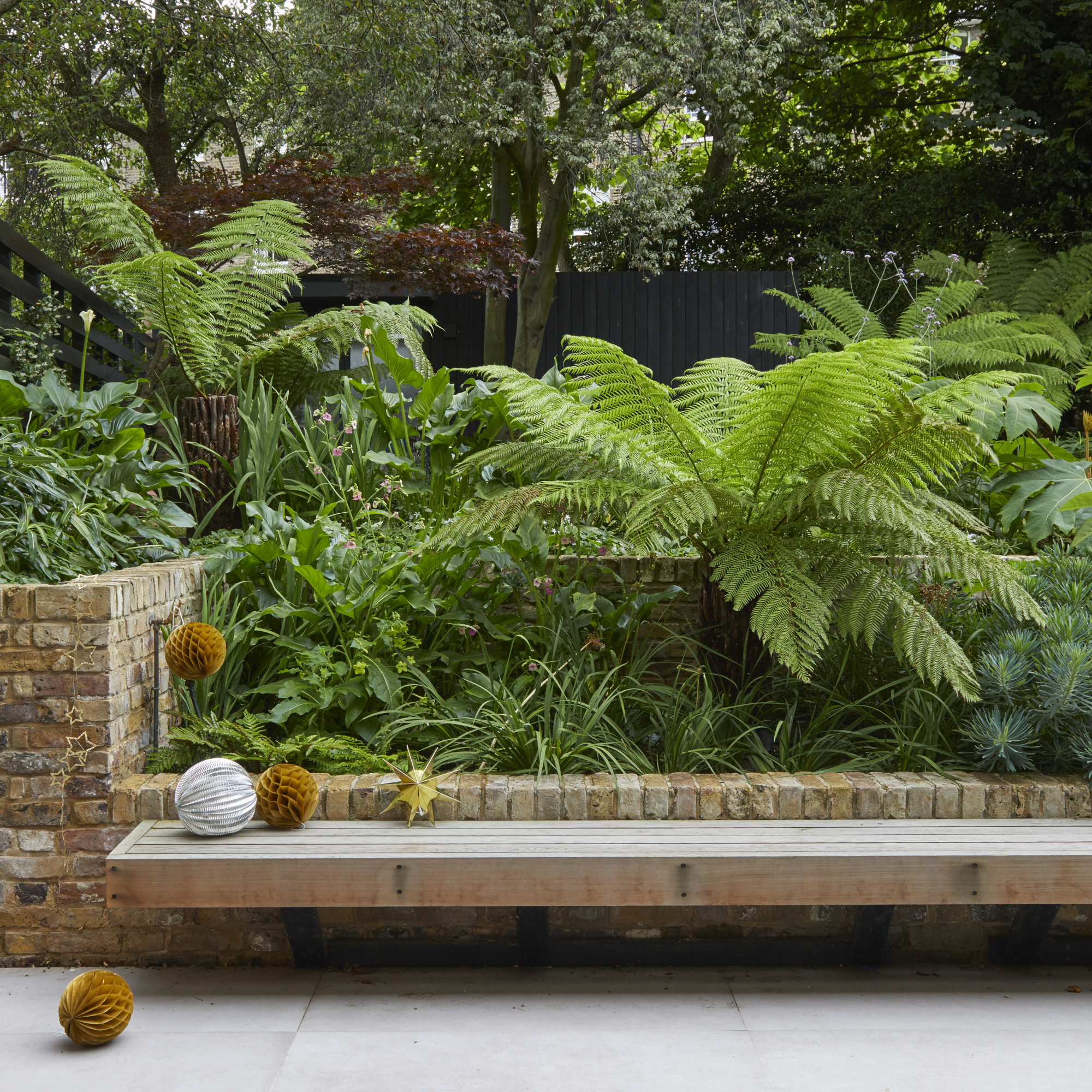
For shady gardens, ferns offer both great colour and texture and come in a variety of colours, shapes and sizes and are an ideal addition for easy garden ideas. They work well for north-facing gardens because direct afternoon sun can scorch and dry out the leaves. For greenery all year round, holly ferns are hardy plants which last all through winter and thrive in the colder shade.
The western sword fern is one of the most robust and low-maintenance ferns and has glossy deep green fronds. For continuous groundcover which will fill in any sparse gaps, Japanese tassel ferns work well under flowering shrubs and the evergreen deep fronds spread out for beautiful coverage. For a fern with a slightly more interesting shape, the hart’s tongue fern has eye-catching frilly fronds in a strong glossy green.
7. Bring in pops of painted colour

Garden paint ideas are a nice way of bringing colour to a shaded garden. It can be done in a variety of ways, from painting dark wooden furniture a brighter colour or giving your fence a new lease of life. Depending on the level of your DIY skills take the opportunity to save money and upcycle old wooden furniture and paint it in your favourite colour or match it to the flowers in your garden.
‘Add colour to the garden with paint or accessories. Painting your fencing or shed in lighter colours will make the garden seem brighter. Add splashes of colour with garden accessories, such as cushions and throws to add some brightness and sunshine,’ say experts at Garden Street. If you’re afraid to go for a bold colour all over just dip in your toe and create a feature wall or fence area.
8. Use potted plants for placement flexibility
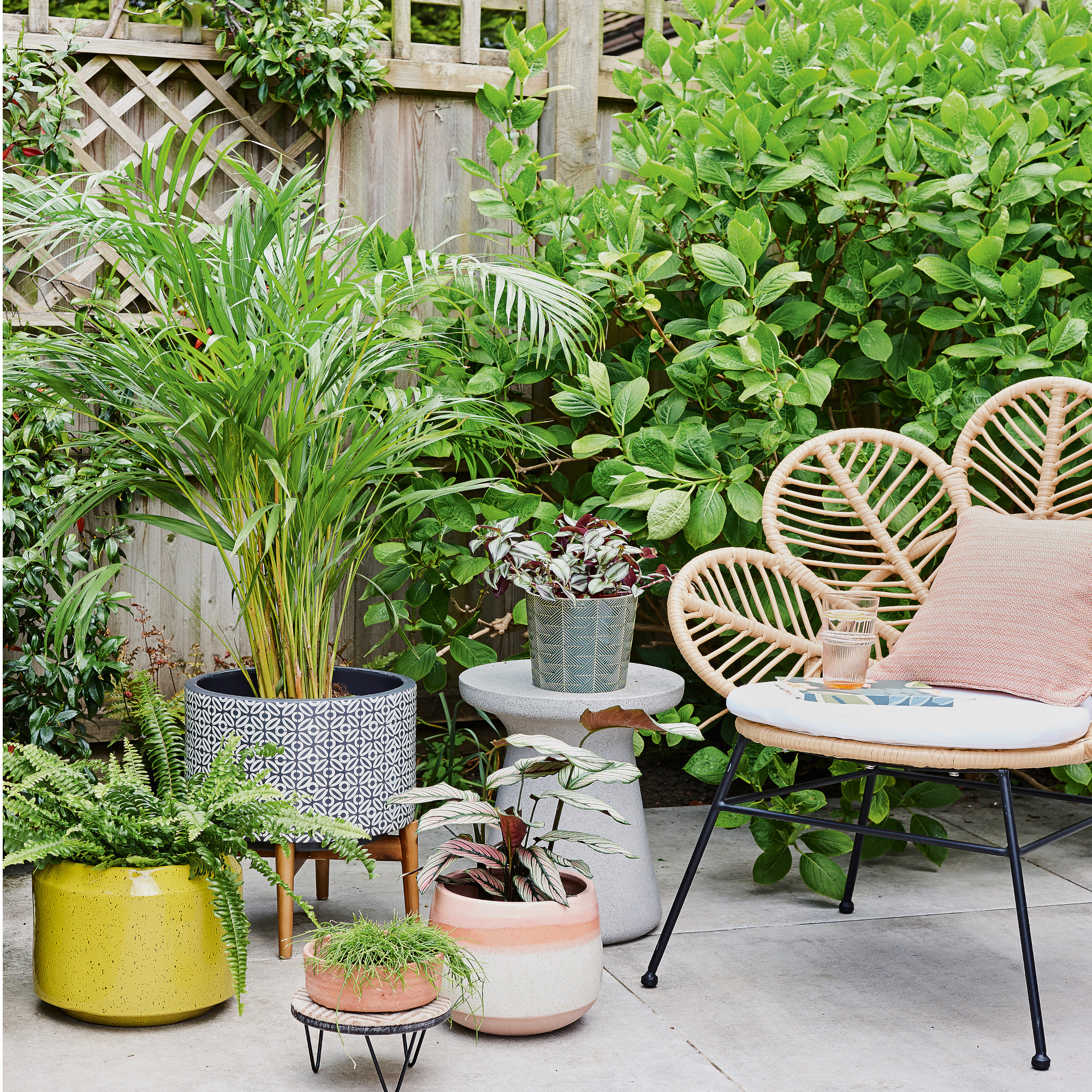
In north-facing gardens, the sun will move across the area throughout the day and change how it lights the garden across the year. Bringing in more potted plants into your garden is a great way to ensure that they are in the best spot within your garden all year round because you can just move them depending on where the sun is shining the most that month.
Choose a collection of pots with varying heights and shapes to keep your display interesting and varied and even take a look at flower pot painting ideas. Hostas love the shade and look beautiful in warm terracotta pots and have eye-catching leaves in varying shades of green, blues and sometimes yellows. If you want to pack a punch with colour, begonias are a great choice because they bloom flowers in bright reds, pinks, yellows and whites.
9. Take advantage of an outdoor kitchen
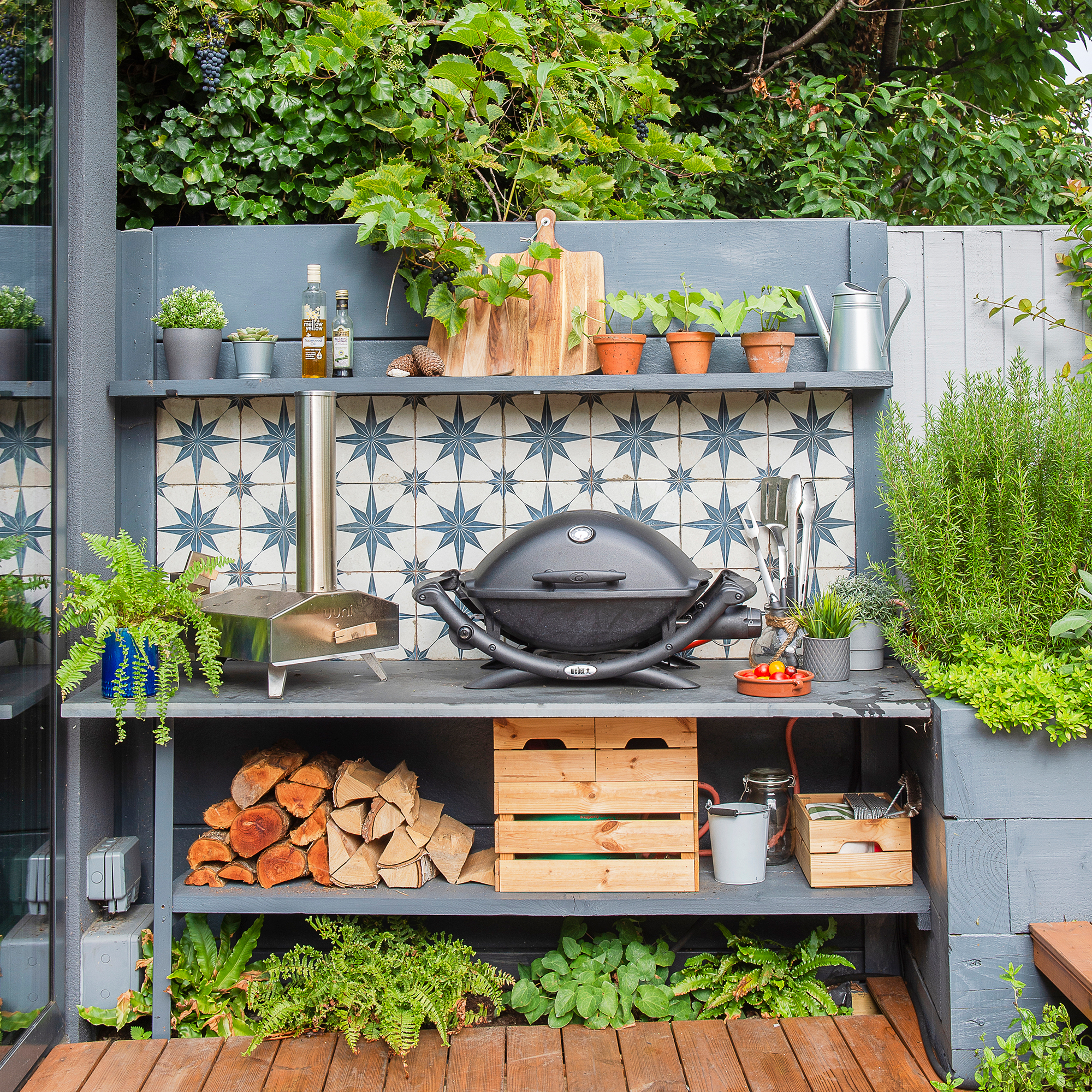
There is nothing worse than trying to cook and being blasted by the sun making it impossible to see what you’re doing and leaving you hot and bothered. This is where having a north-facing garden comes in handy if you have an outdoor kitchen.
An outdoor kitchen makes alfresco dining much easier and creates a much more sociable experience when you can cook for your guests. Just make sure to create outdoor kitchen ideas that have adequate worktop space and storage and are made from hard-wearing materials.
‘For budding outdoor chefs, north-facing gardens can be perfect for setting up your garden kitchen. Never worry about getting the sun in your eyes while trying to cook up your latest masterpiece, and keep your cool when grilling thanks to the generous shade,’ says Joel Garthwaite from Harbour Lifestyle.
10. Create an area for wildflowers
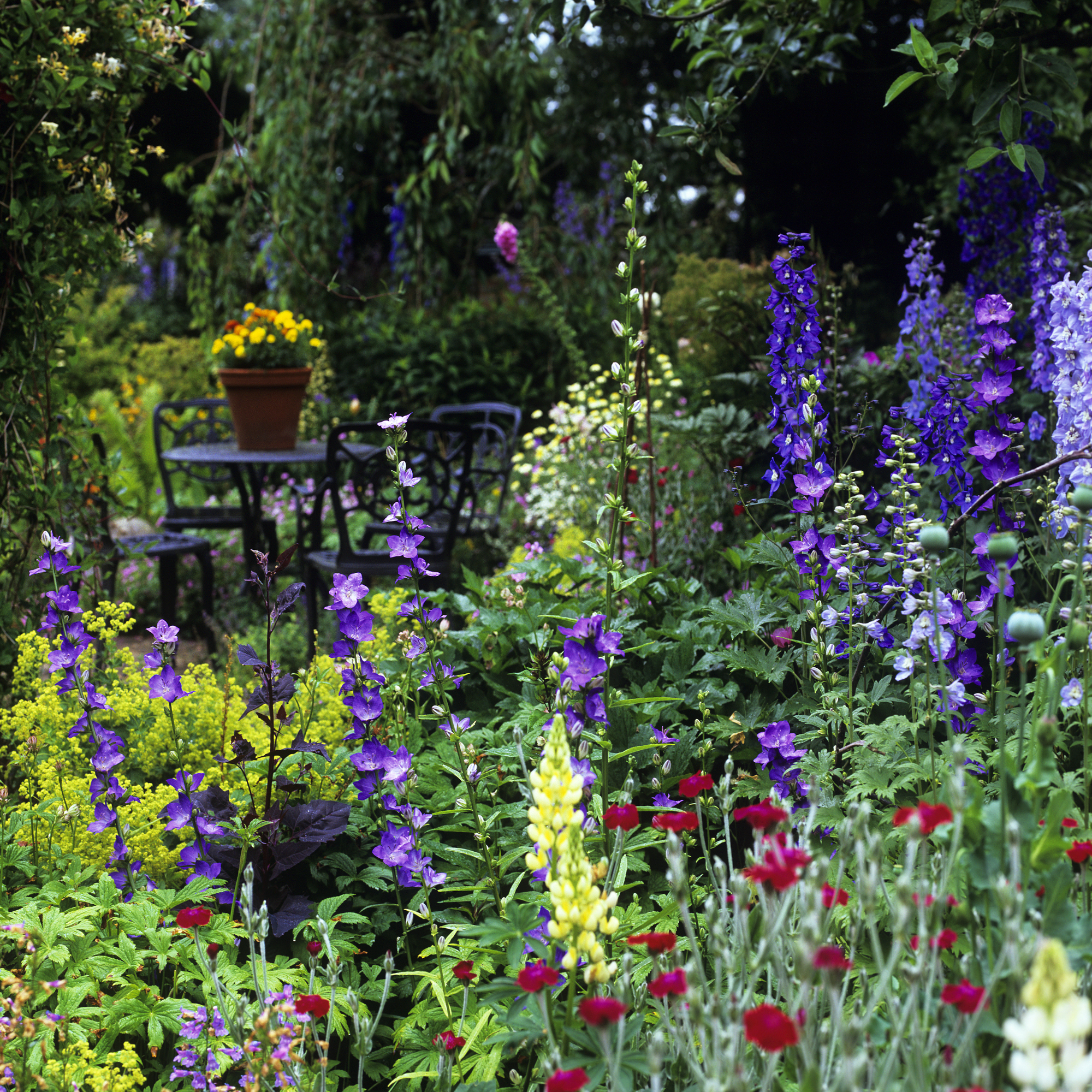
‘While most flowers require a lot of sunlight, many wildflowers grow very well in the shade,’ says Chris McIlroy, group e-commerce and digital manager at The Grass People.
Some of the best wildflowers for shady gardens include sweet cicely, angelica, sweet woodruff and red campion. These will provide a variety of different colours brightening even the shadiest spot.
'Certain species of wildflowers thrive in very low light conditions and are similar to what you would find growing naturally beneath trees or in a woodland setting. Growing wildflowers in the sunlight-stricken parts of your garden doesn’t have to be complicated; all you need to do is pick the right seed for shade.
'Wildflowers for shaded areas help provide a canopy habitat for pollinators and wildlife and make great use of the shady spaces in your garden. These wildflowers are also ideal for a wide range of pollinators and help create a habitat for local wildlife in your area.’
11. Choose light-coloured furniture
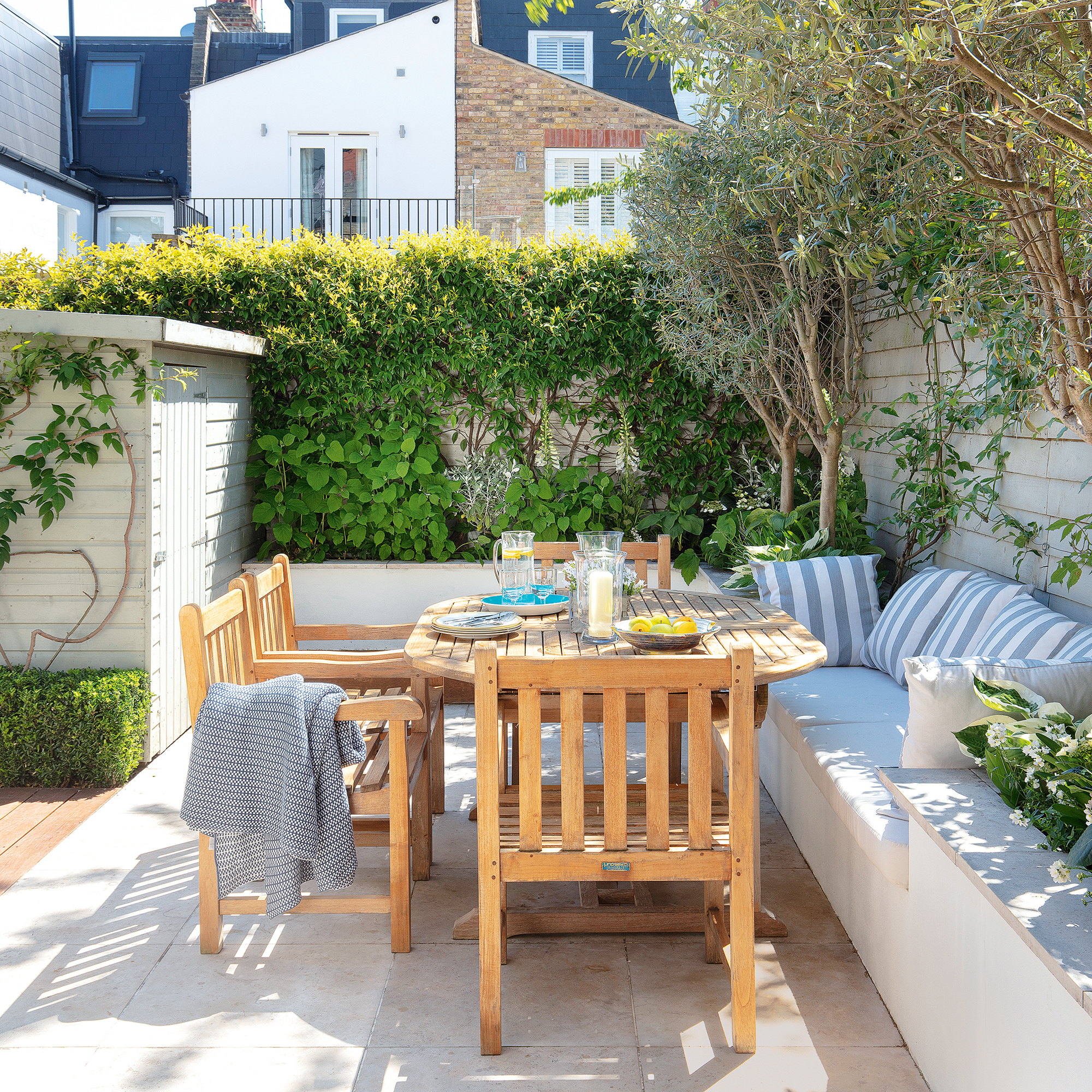
Light-coloured garden furniture ideas look great in shady gardens, especially with minimalist furniture. Simple light-coloured furniture will give your north-facing garden ideas an elegant feel and prevent the space from feeling dark and gloomy.
An uplifting yellow tone will bring vibrancy to the darkest gardens and can be incorporated through cushions and seating. Grey and off-white look good against rattan and will give the illusion of a larger brighter space, plus it will complement any other colours in your garden.
Kris Manalo, design lead at Atkin and Thyme says, ‘Choosing paler coloured furniture will visually lift a north-facing garden. It stands out against the natural greens and browns and will make your seating area feel light and inviting.’
12. Place furniture at the back of the garden
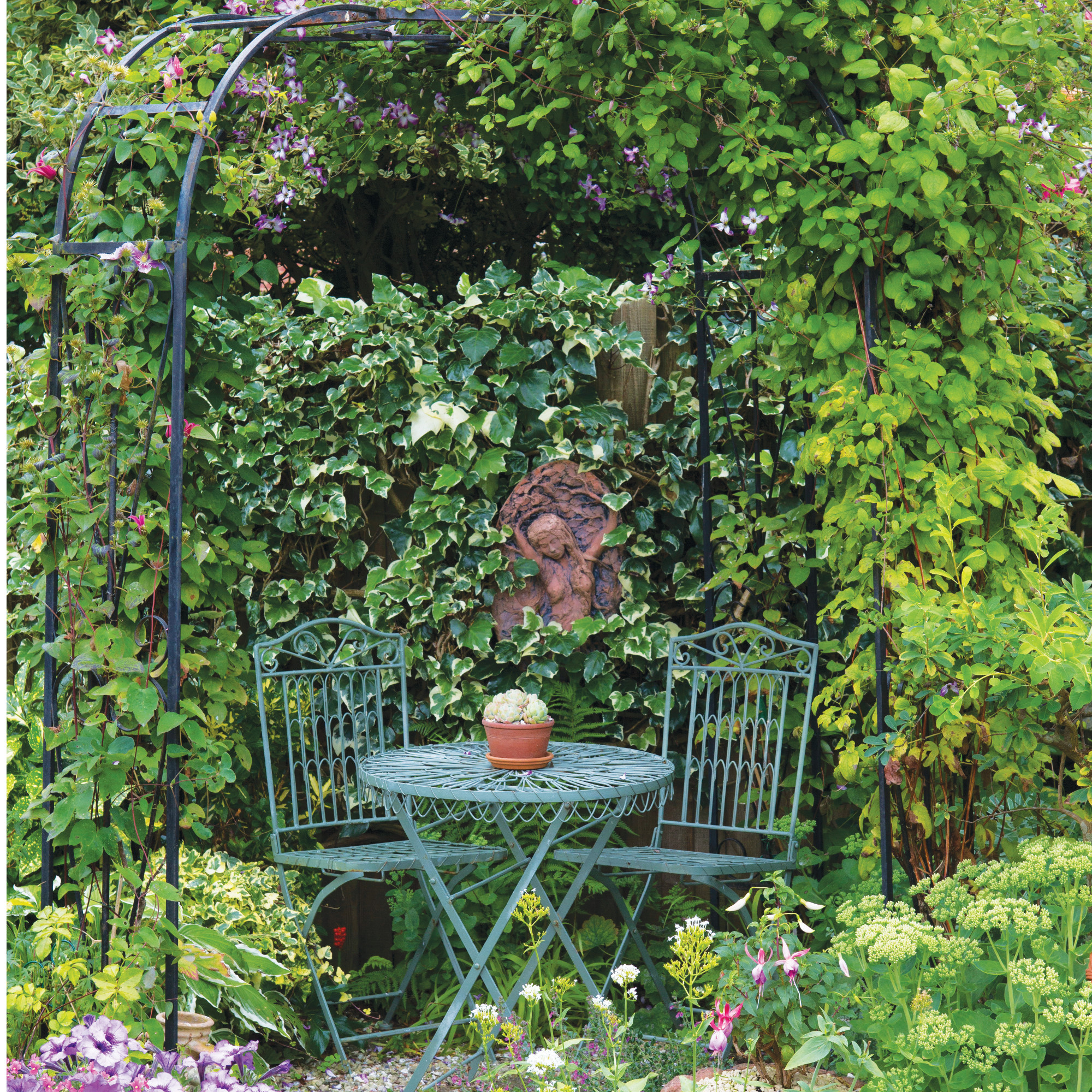
A north-facing garden mainly gets sunlight mainly to the back of the garden so this is the ideal place for furniture so you can bask in any available sun. Find the sunniest spot in the back of your garden for a cosy seating area that will look good day and night.
Rian Habergham from Leisure Bench says, ‘This part of your garden is most likely to get the most sun, with the part of your garden closest to your home getting the least. Instead of having your seating area close to your house, create it further down your garden to ensure it reaches the sun.
'There are many benefits to having your seating area at the bottom of your garden, such as added privacy from neighbours and less interference from activities going on in the home. It also means that you create a separate space that feels more secluded and relaxing.’
13. Embrace lush greenery
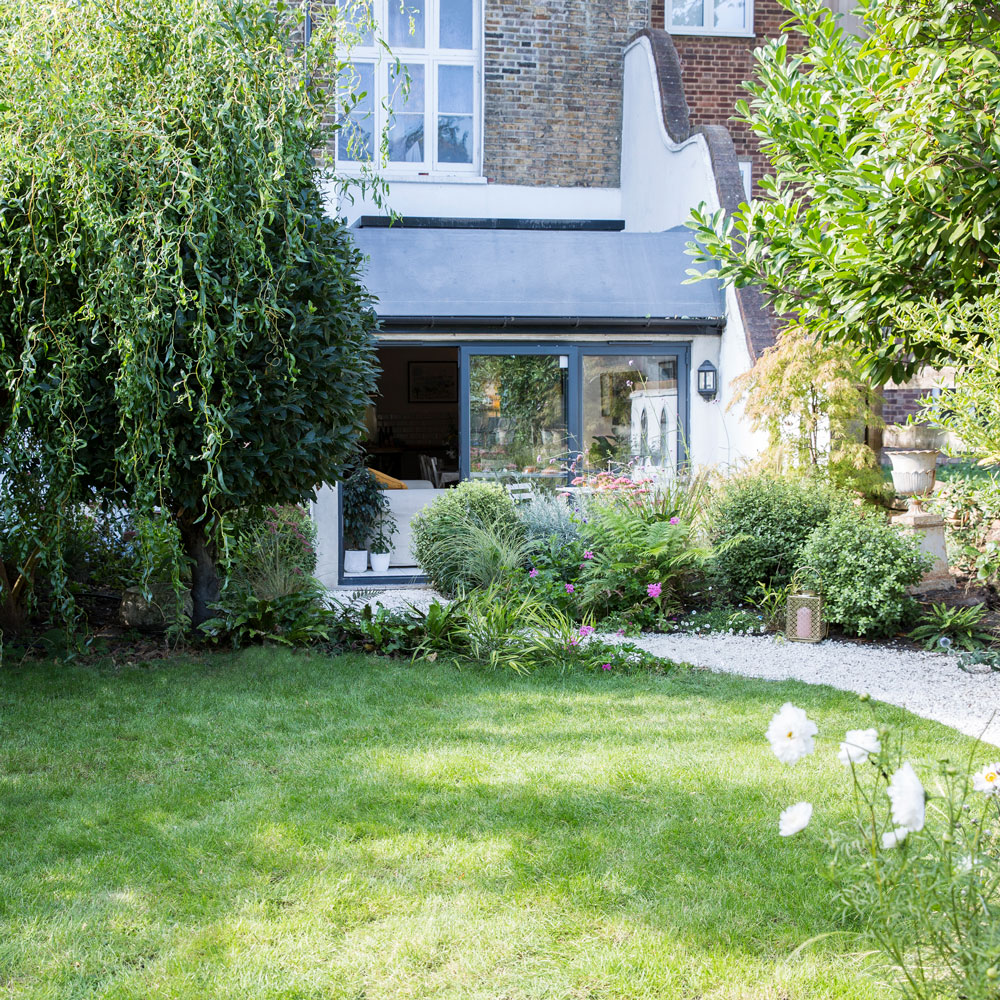
'Embracing lush greenery can be incredibly impactful in north-facing gardens' explains expert gardener Rachel Morgan. 'Green gardens do not have to be dull or boring, as you can have incredible variation in green shades. One of the great benefits of having a lush, mostly-green garden is that invariably many of these will be evergreen, so you will have constant interest all year round.'
'Pops of colour can be added seasonally, or in certain sections of the garden for extra impact. For example, fully shaded garden border ideas can be filled with ferns, but add hellebores for a jolt of colour in spring, and welsh poppies for the same in summer.'
14. Consider the impact of ground cover
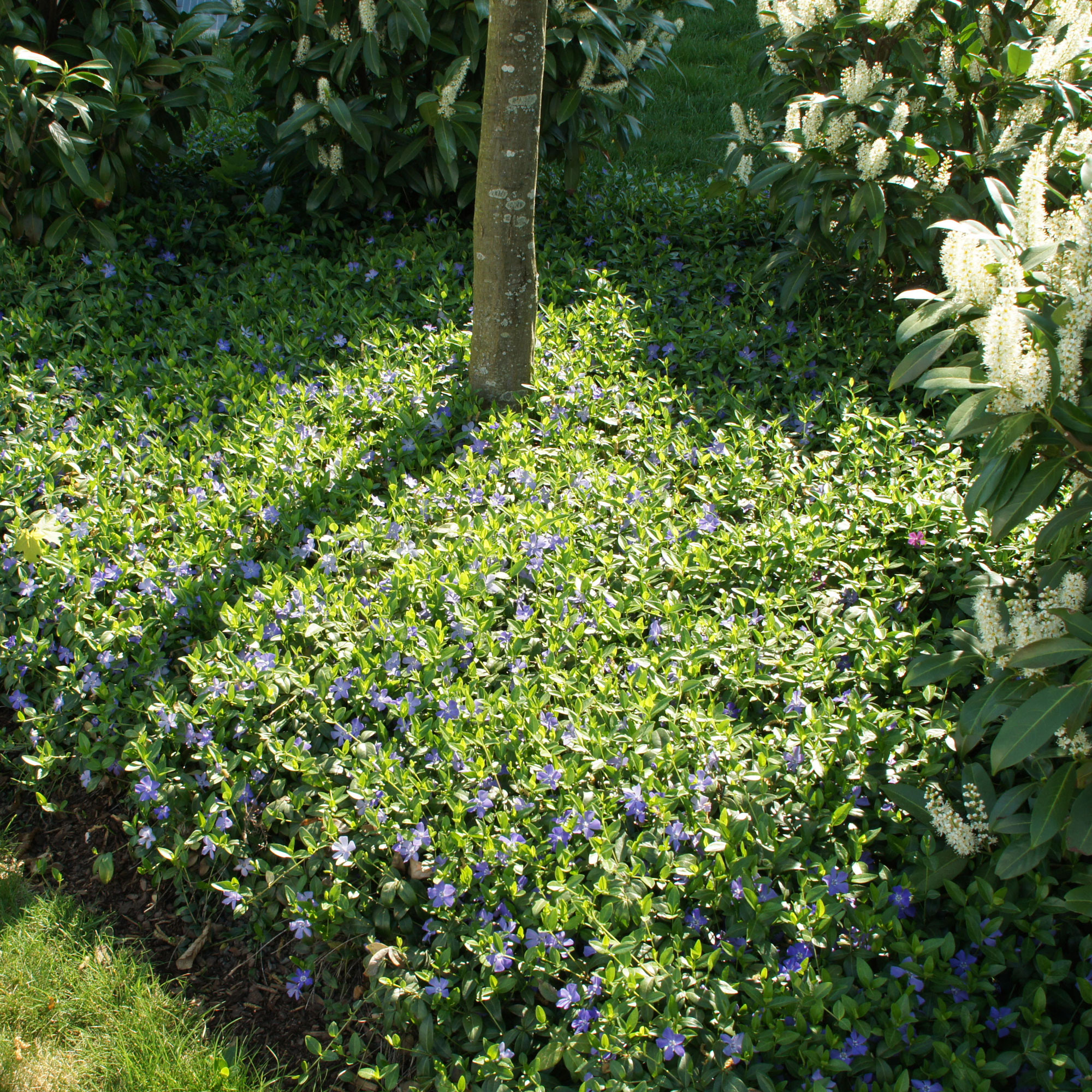
'Ground cover can really work wonders in a north-facing garden where light is lacking' says Rachel Morgan. 'Filling a space can be done in a pleasing, organic way with ground cover, which creeps and expands to the space.'
'Vinca minor is a brilliant plant for this, You can also use dogtooth violets, cyclamen, bergenia, cardamine, and euphorbias for the same effect.'
15. Know your shade
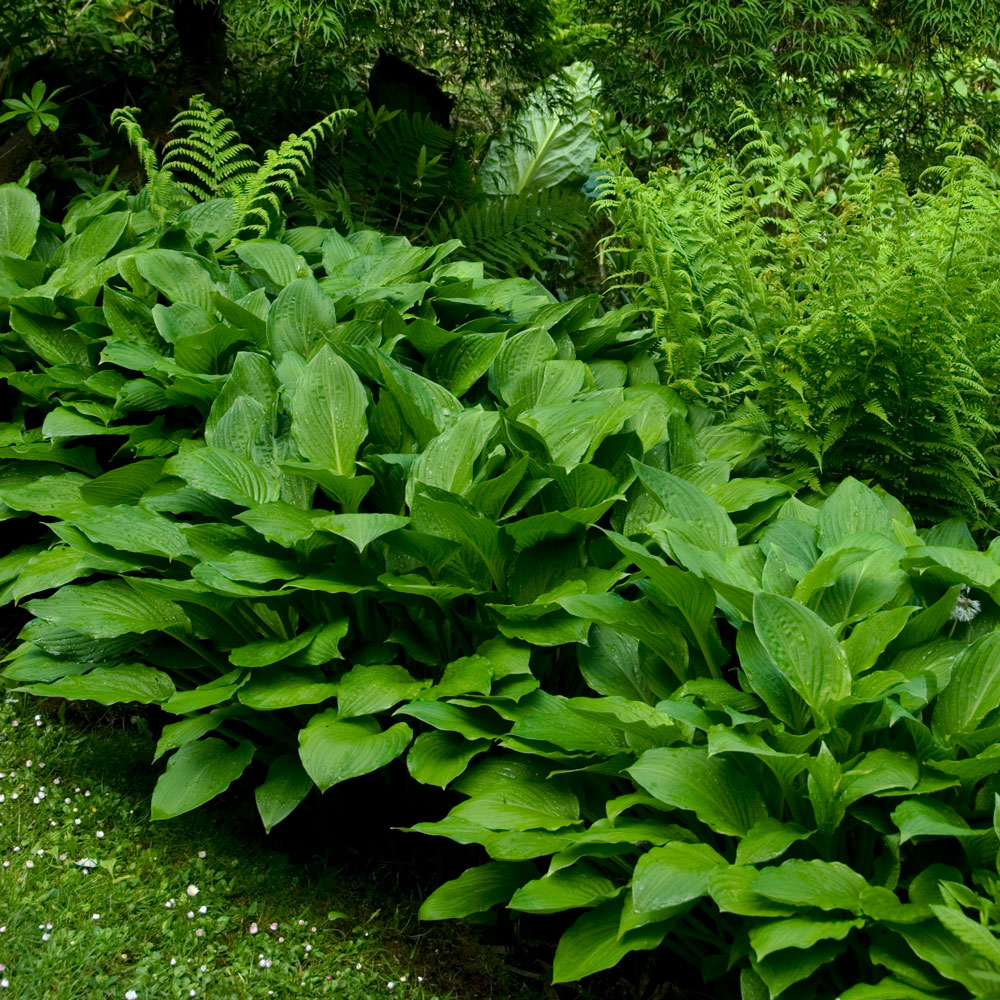
It’s important to understand the type of shade that envelops your garden, to identify how best to deal with it.
'For some, there may only be light shade which is open to the sky but with no direct sunlight, whilst others may have deep shade due to a dense tree cover. Taking the time to do this will make the process of choosing suitable plants that little bit easier.
'Some plants like the Hosta family thrive under light shade, whilst the ‘soft shield’ fern can blossom in the dry shade with little to no sun' advises Chris Bonnett, owner of Gardening Express
16. Plant on repeat
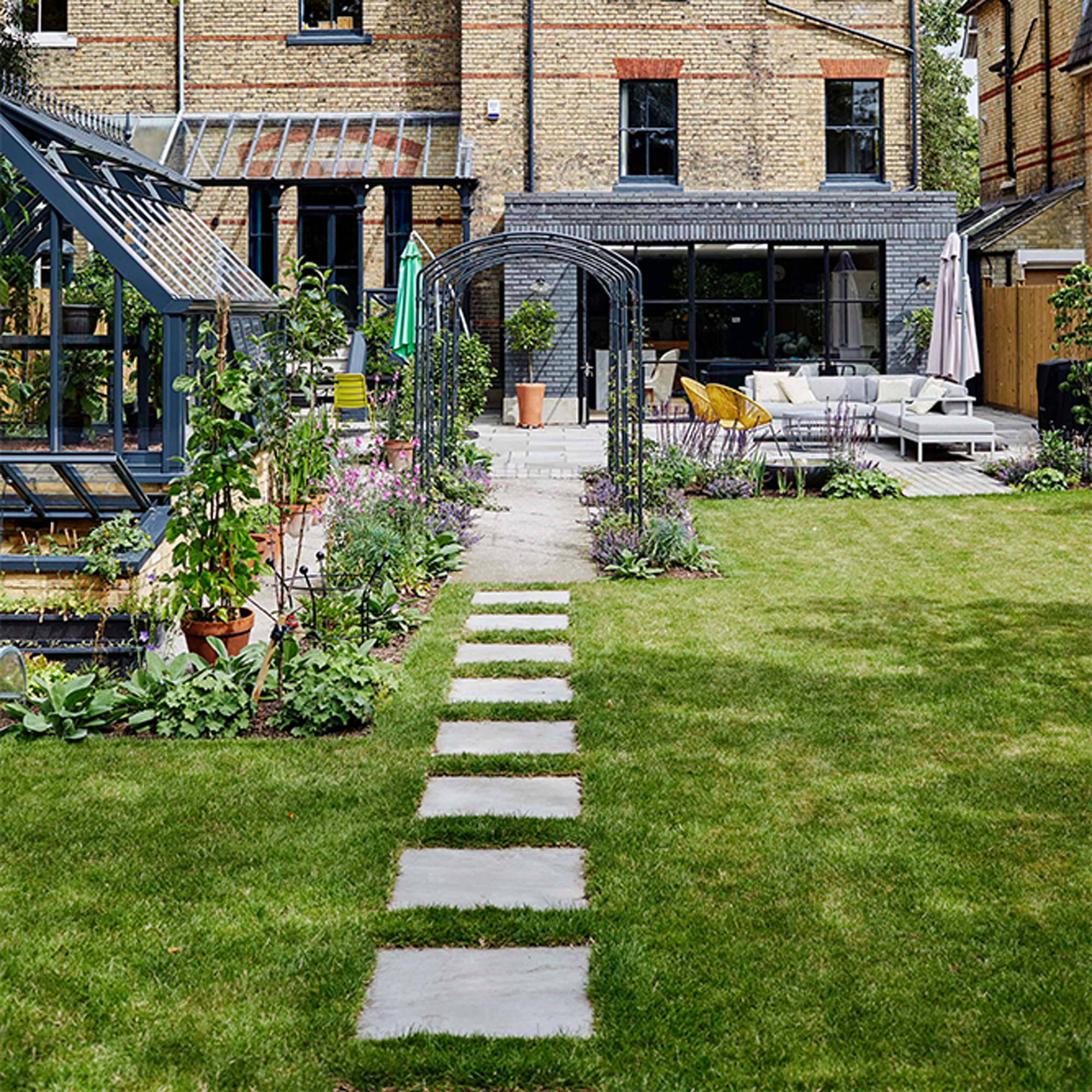
Where your options are limited it's always advisable to play to strengths, and that for north-facing garden ideas is planting on repeat! 'Repeat planting is incredibly helpful in north-facing gardens where the planting options are more limited' explains Rachel Morgan.
'Repeating plants not only increases your options for what to choose, but it leads the eye throughout the garden space and adds to a sense of cohesion.'
17. Make the most of natural light
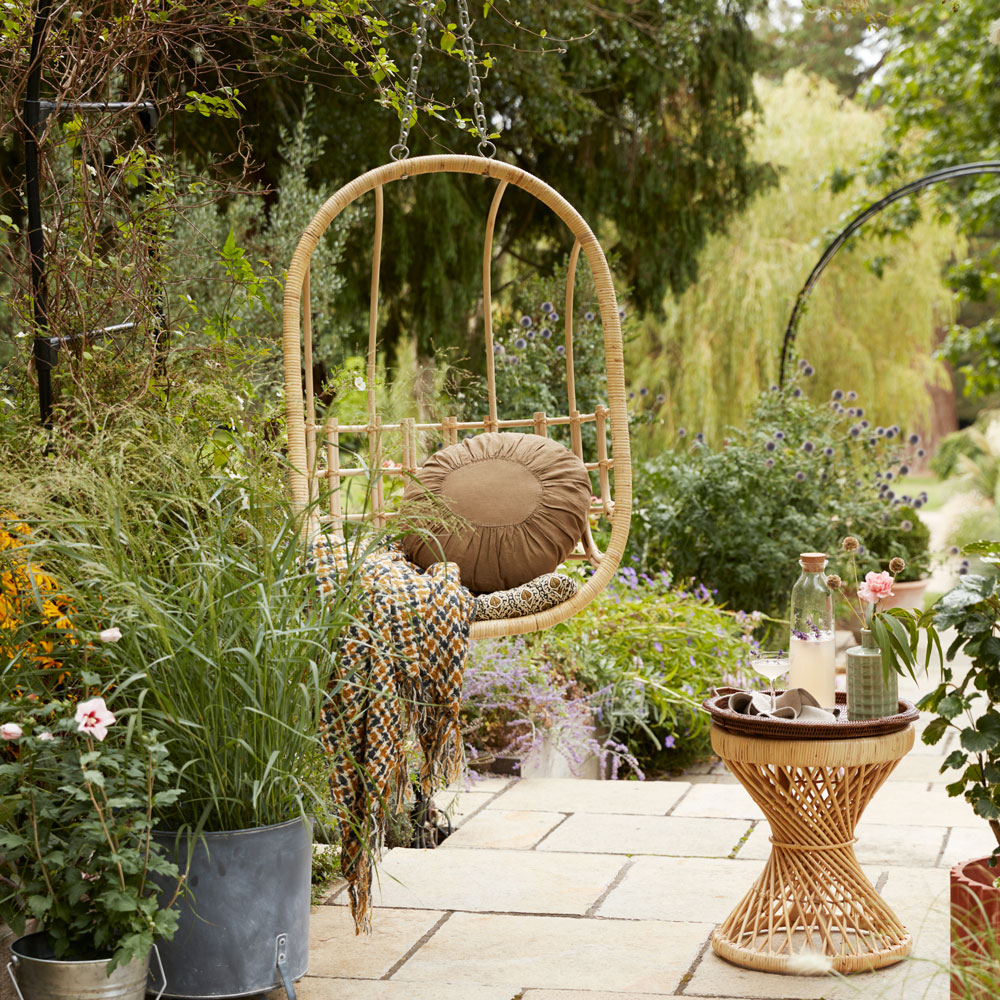
Any obstructions to sunlight must be removed, including any trees or structures in order to maximise light levels. 'Remove a layer of leaves from a particular dense canopy to do this, or look at lowering imposing hedges that may obstruct light' suggests Chris Bonnett from Gardening Express. Choose garden fence ideas which still allow as much light as possible to get through to your garden.
Rian Habergham from Leisure Bench recommends, 'Cut away a layer of trees or remove a large fence that is preventing your garden from getting as much light as possible. While nothing can be done about your property blocking out the sun, you can change how your garden blocks it.'
18. Create more light with a pond
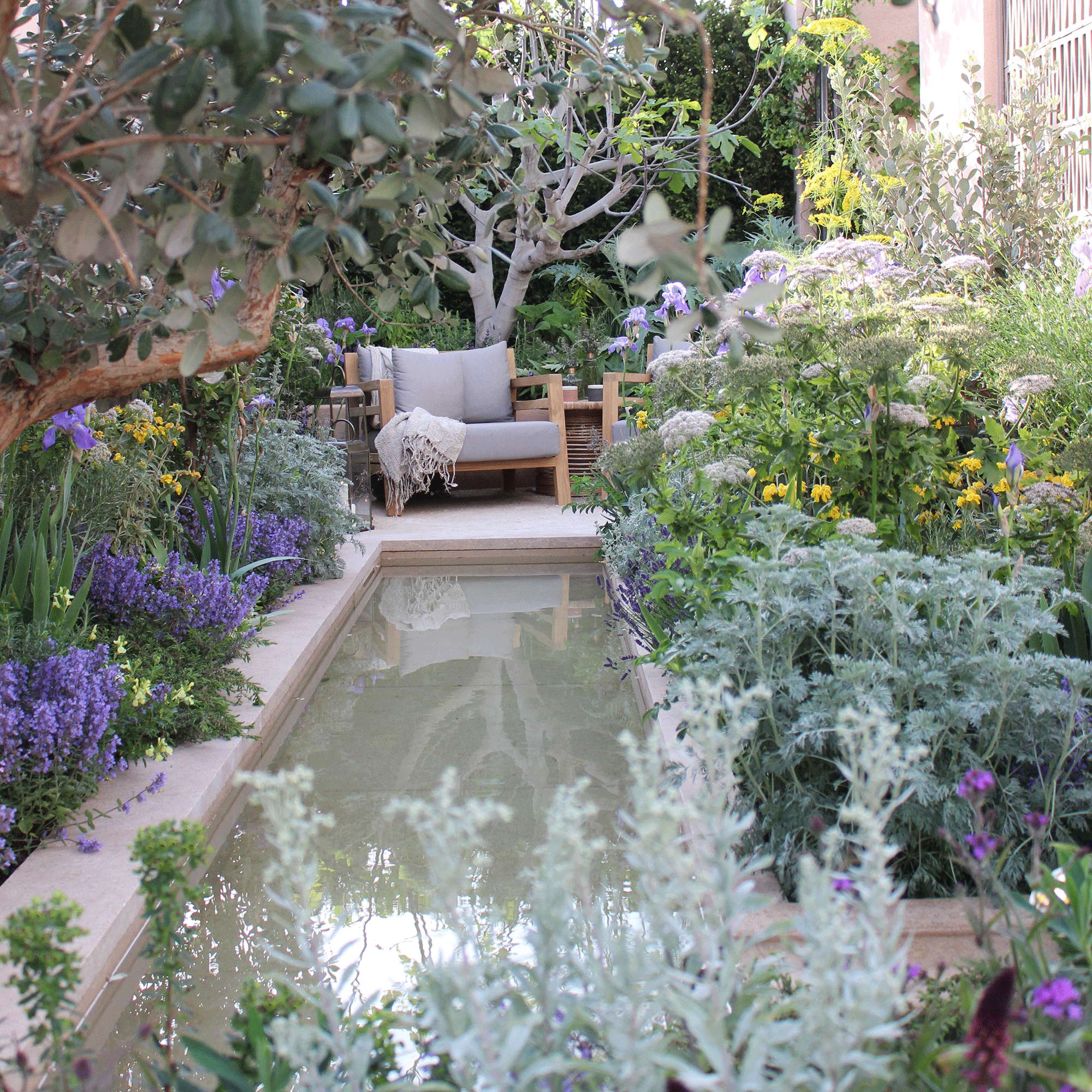
If your garden is lacking light try creating your own with a few savvy tricks of the trade. There are clever ways to create ‘fake’ light in the garden. A popular method includes installing a garden pond idea, with the water reflecting much-needed light back into the surrounding space. For a cheaper option consider adding mirrors to an outbuilding or decorating pieces which will utilise the little light and bounce it around the space.
19. Generously plant bulbs
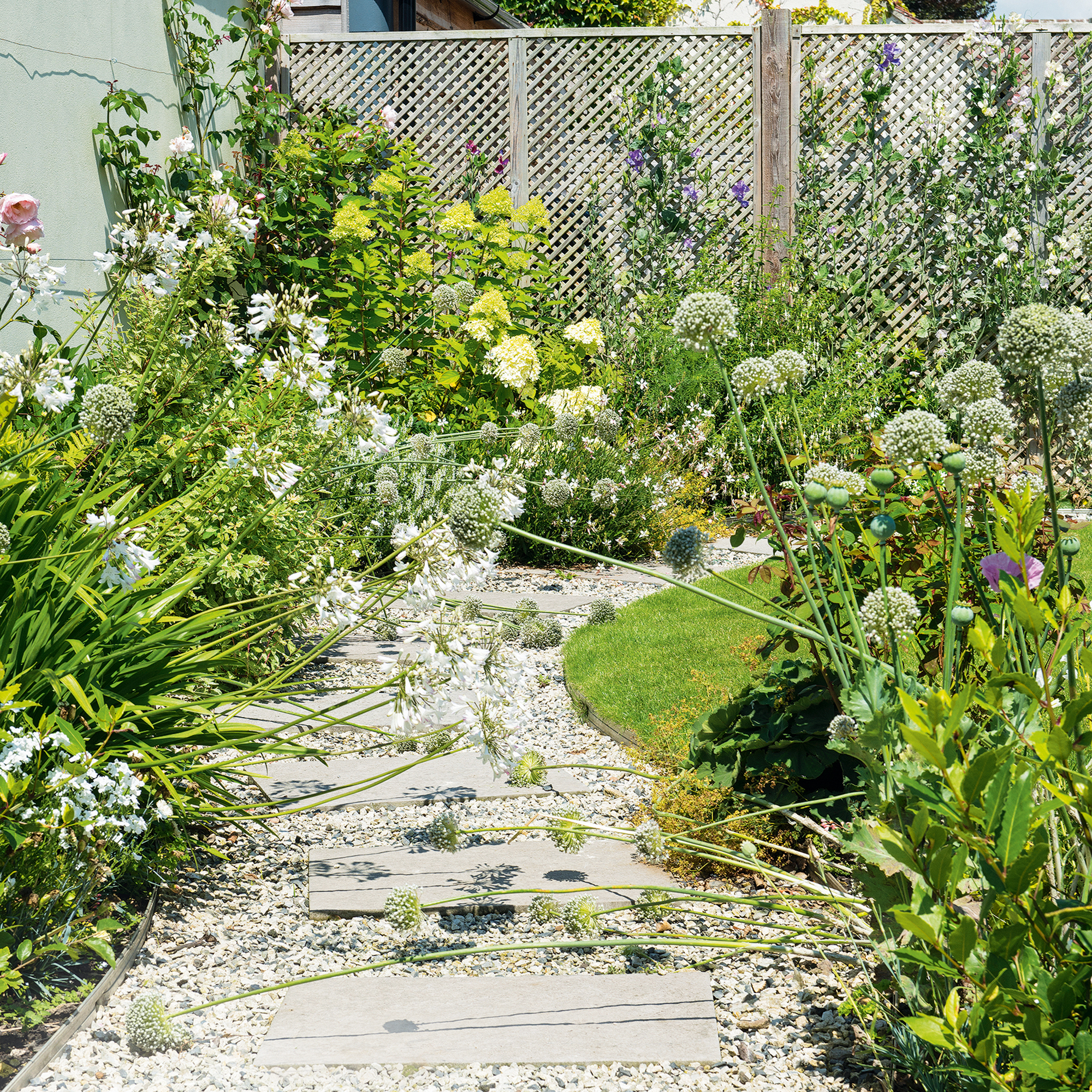
'Many bulbs thrive in shadier spaces, so come autumn you can fill a border with hyacinths, snowdrops, crocuses, fritillaria, tulips, muscari and scilla' advises Rachel Morgan. 'These will need to be planted in the autumn ready for a bold, brash riot of colour come the spring.' Bluebells, cyclamen, anemone and crocus are also shade-loving varieties that will give your garden colour year after year.
20. Choose plants that thrive in shade
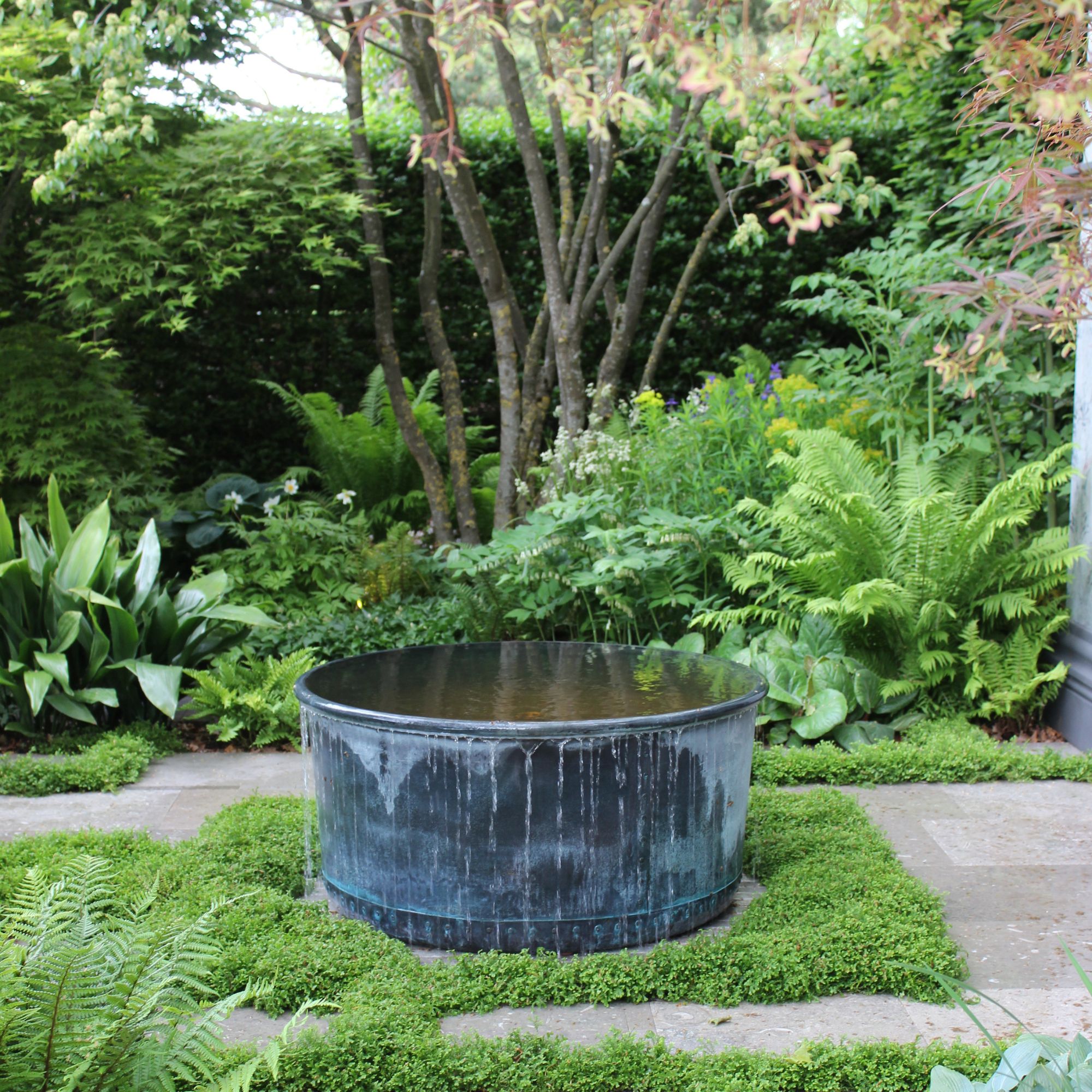
It’s important to understand that different plants have different needs. Some require large amounts of sun and thrive in dry conditions. Others only prosper in shady and damp areas, perfect for planting in north-facing gardens.
Try planting flowers which do well in limited light conditions often reserved for winter like snowdrops or cyclamen Coum which are revered for their hardy properties. 'By simply taking the time to learn about the plants which prosper in an environment with little sunshine, achieving a flourishing garden is surprisingly easy,' explains Chris Bonnett from Gardening Express.
21. Pick shade loving herbs for a cooks garden
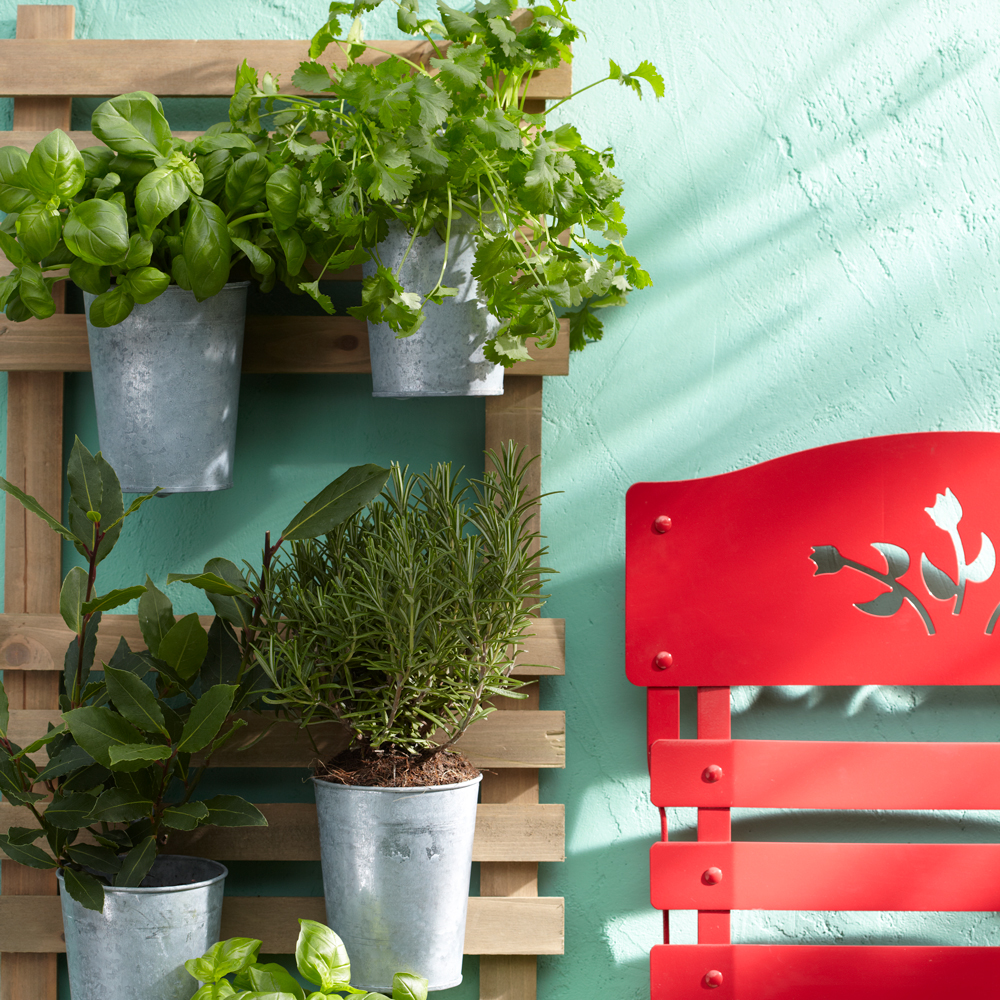
Marcus Eyles from Dobbies Garden Centres recommends the conditions for growing a herb garden. 'Create a herb garden' he suggests, 'Although Mediterranean herbs love full sun, there are a number of herbs that will thrive in partial shade, such as chives, coriander, parsley and rocket, keeping you supplied with homegrown pickings.'
Daniel Carruthers, director at Cultivar Greenhouses advises, 'Chive and even mint – just make sure you plant it in its own pot as it can grow so aggressively that it could over your garden! Avoid sun-loving varieties such as rosemary and basil, as they won’t thrive as well in partial shade.'
22. Enliven the space with sunshine yellow
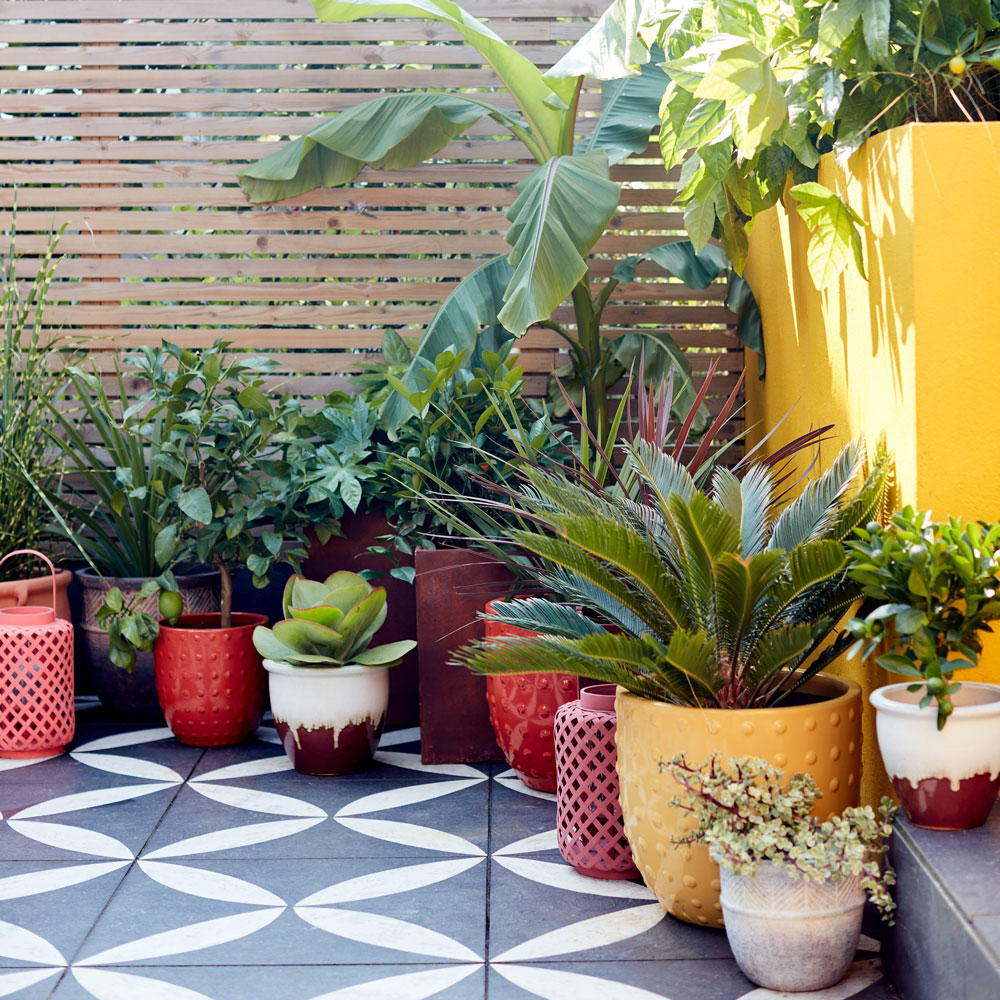
Welcome a splash of bright yellow to your north-facing garden ideas to substitute the sunshine. Painting a garden fence or wall is a quick option which offers maximum impact for a backdrop to lush greenery. Alternatively, you could incorporate this sunny shade with furniture and accessories.
Lynsey Abbott, outdoor living buyer at Dobbies Garden Centres explains, 'The bright uplifting tone of yellow works perfectly outdoors. A naturally good fit for the garden, it is rooted in the colour of nature - reminiscent of warm spring days, golden daffodils, and cheery sunflowers. Versatile and timeless, it can easily be incorporated into every outdoor space. Whatever the weather, this shade will help to bathe your garden in sunshine!' ideal for shady gardens lacking the real thing!
23. Create a shaded area for kids to play
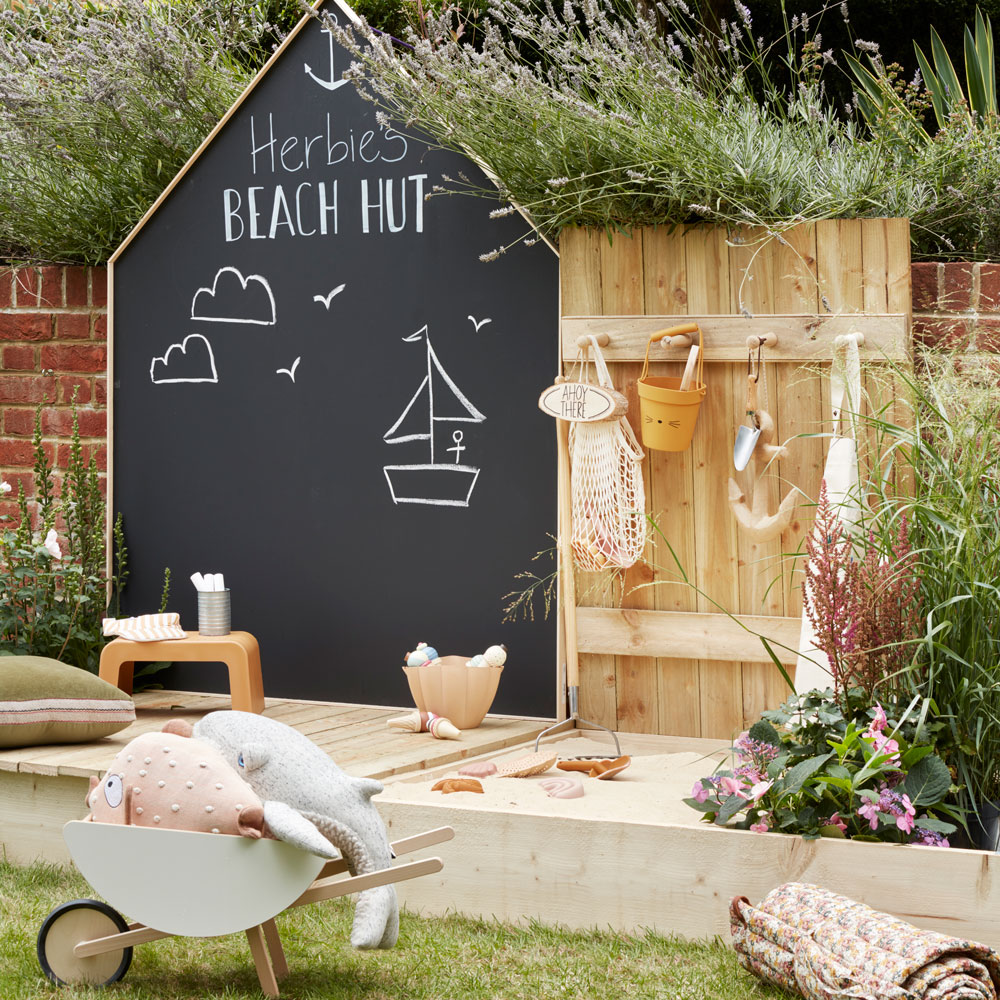
A shaded garden is not all bad, it offers the added benefit of extra shelter and shade for children and pets to play in during long hot summers. Embrace the shady spot to pop in a sandpit and dedicated play area for the kids.
24. Consider clever garden lighting
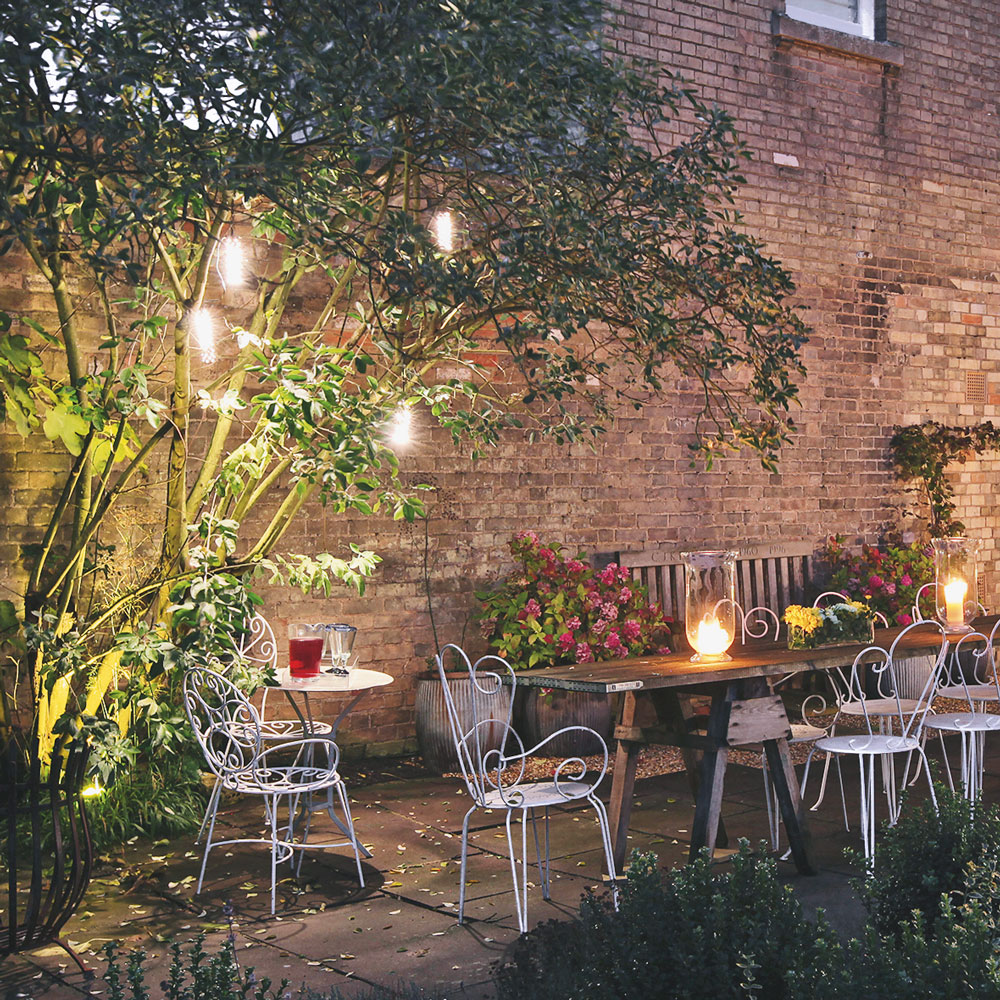
Help to illuminate the darker garden space in your north-facing garden ideas with thoughtful lighting.
'In a North-facing garden, clever garden lighting ideas are a-must,' advises Marcus Eyles from Dobbies Garden Centres. 'From solar stakes to line a pathway to lanterns and candles'. After dark is when this garden shines just as bright as that of a sunny south-facing garden.
25. Make the furniture moveable
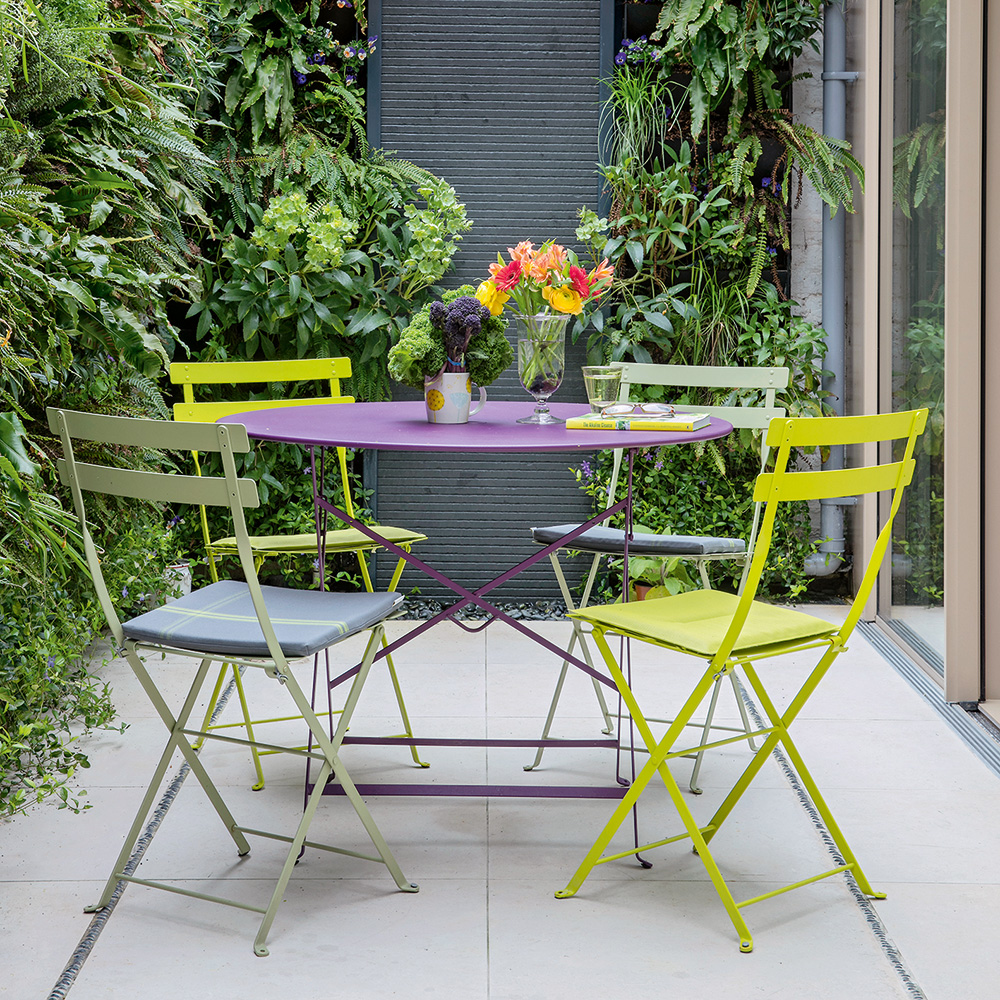
Make the most of any sun that the garden does get by having the freedom to easily move the furniture throughout the day – chasing the sun! A simple, lightweight set will enable you to move around the plot with ease to seek a slither of sunshine.
Kris Manalo from Atkin and Thyme advises, 'Opt for furniture that is easy to adjust so you can change its position throughout the day as the sun shifts, or keep your main table and chairs planted but introduce an easy-to-move piece such as a lounger alongside.' You'll be able to find a set for less using garden discount codes to help your styling stay on budget.
FAQs
Do you get any sun in a north-facing garden?
Despite being shady, north-facing gardens will get around 3-4 hours of direct sunlight each year.
‘Generally speaking, larger north-facing gardens get the sun in the late afternoons and evenings. This makes a north-facing garden ideal for those that work during the day and want to enjoy their gardens at night, as well as those that don't enjoy sitting out in the garden during the hottest periods of the day,’ says Rian Habergham from Leisure Bench.
‘If you have a small north-facing garden that isn't very long, chances are you will get less sun than those do with larger gardens. The amount of sun north-facing gardens get depends on how shaded the garden is by the house. If your house is short and your garden is long, you will get more sun.’
What plants are best for north facing gardens?
When planning which plants work best for north-facing garden ideas, keep in mind that you want year-round colour and interest. A combination of shrubs, grasses and perennials would work best in this type of garden.The following plants will work great in a north-facing garden:
The best vegetables include: Lettuce, Rocket, Chives, Kale, Mint.
The best plants include: Ferns, English ivy, Coral bells.
The best flowers include: Fuschias, Honeysuckle, Dogtooth Violet, Hydrangea Integrifolia, Sweet Peas, Foxglove, Lungwort, Rambling Roses, Bergenia.
‘Shade loving plants are a great solution for north-facing gardens,’ adds Francesca Hadland, styling expert at Bridgman. 'Ferns, grasses and other foliage will provide a lush backdrop with an air of serenity. Bright white plants like hydrangea and agapanthus will also suit a north facing garden, punctuating the space with eye-catching lightness.'
Tamara was Ideal Home's Digital Editor before joining the Woman & Home team in 2022. She has spent the last 15 years working with the style teams at Country Homes & Interiors and Ideal Home, both now at Future PLC. It’s with these award wining interiors teams that she's honed her skills and passion for shopping, styling and writing. Tamara is always ahead of the curve when it comes to interiors trends – and is great at seeking out designer dupes on the high street.
-
 Everything you might not know about Ideal Home's history
Everything you might not know about Ideal Home's historyFrom Mary Berry's stint as Food Editor in the 1970s to the founding issue
-
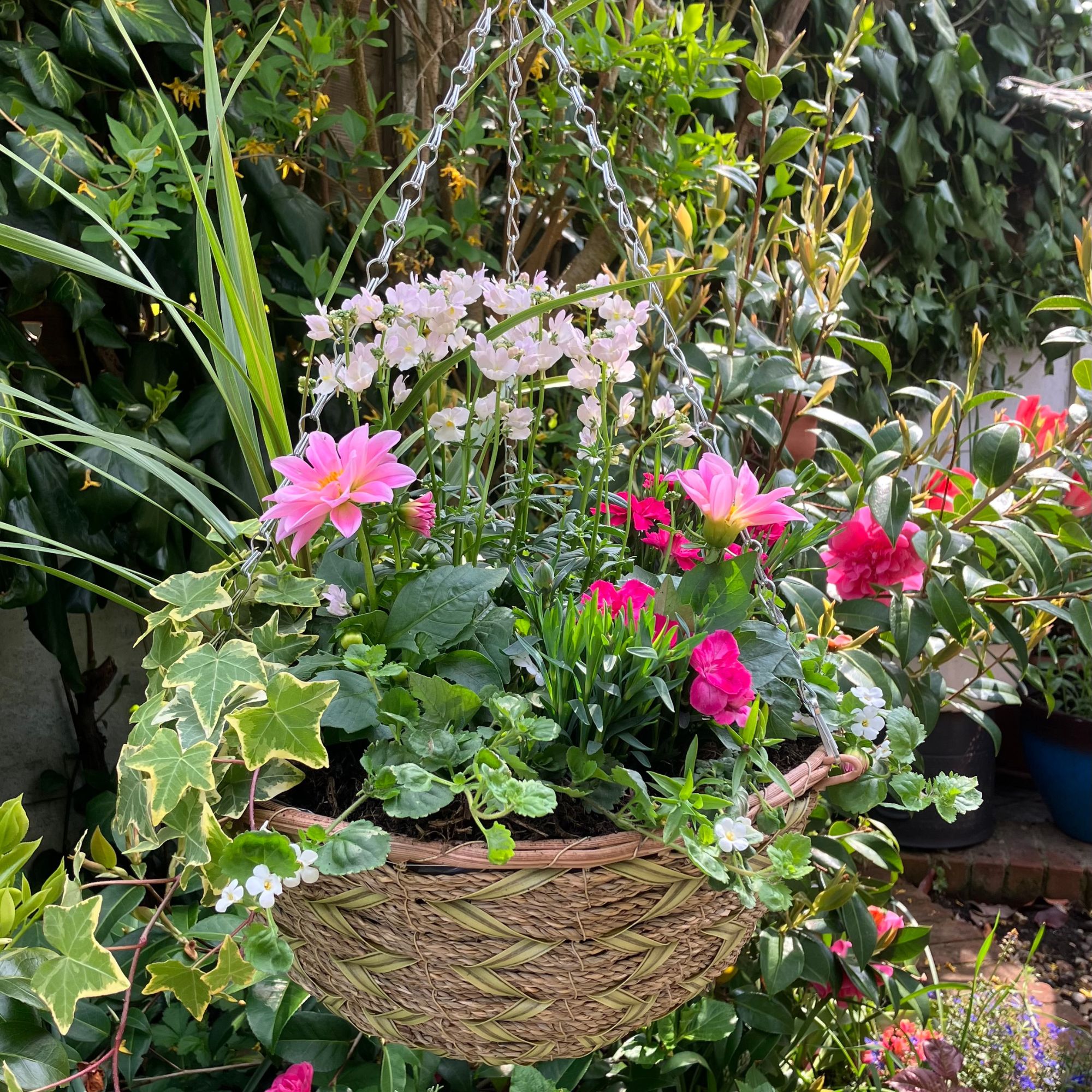 The easy planting technique I always use to create stunning hanging baskets - it's the secret to a show-stopping flower arrangement
The easy planting technique I always use to create stunning hanging baskets - it's the secret to a show-stopping flower arrangementIf you're not sure where to start when making up a hanging basket for the garden, the 'thriller, filler, spiller' method is worth a try
-
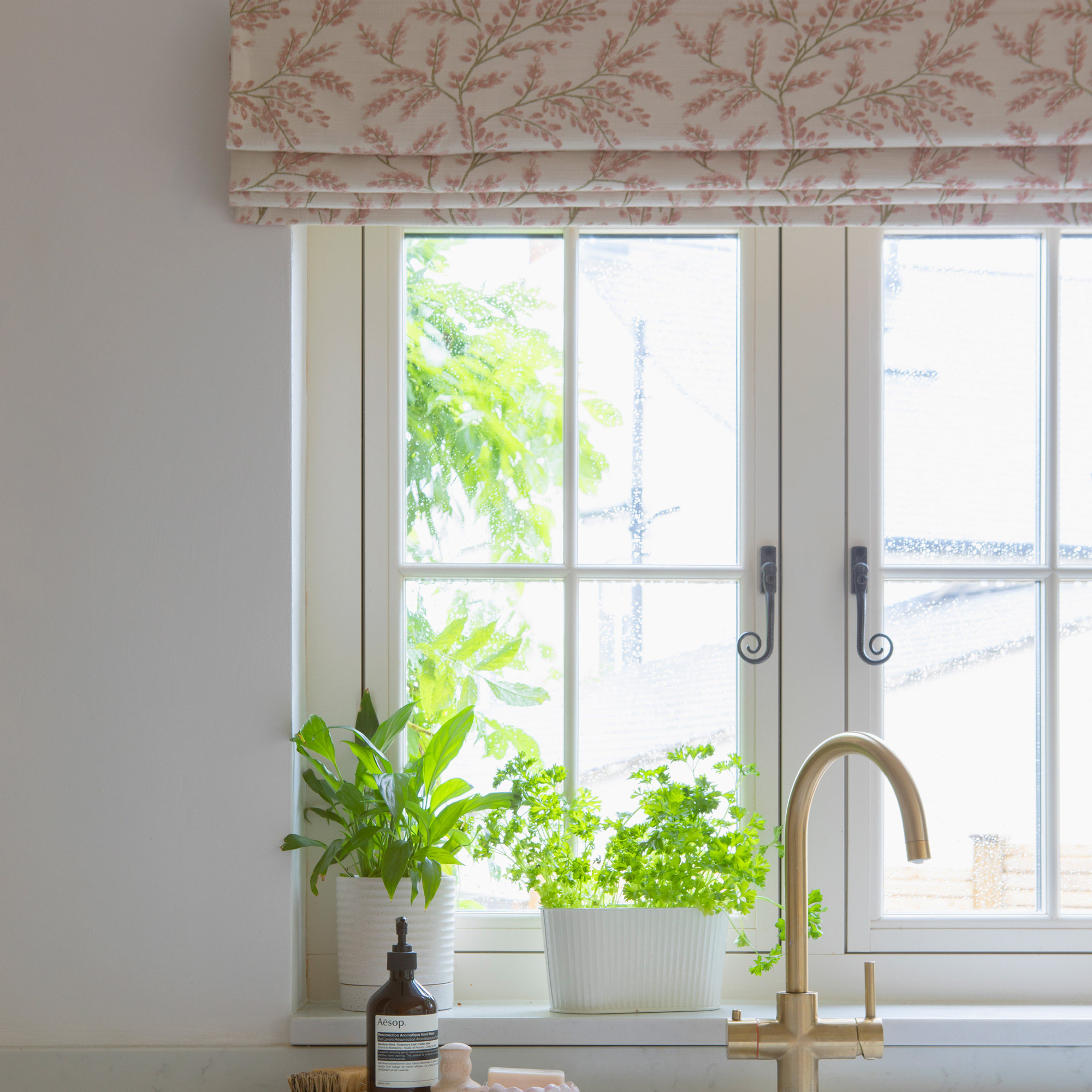 This £10 Amazon fix stopped pooling water from destroying the wall behind my kitchen sink – 6 months on, it still looks great
This £10 Amazon fix stopped pooling water from destroying the wall behind my kitchen sink – 6 months on, it still looks greatIf you're struggling with pooling water around your kitchen sink, listen up